OCTOBER 2025
PLUS BATHROOM BEAUTY CELEBRATING MOTHER NATURE’S MAXIMALISM
HOLIDAY HEAVEN REVEALED: WHERE TO CATCH LATE SEASON SUNSHINE

EXCLUSIVE WE CHAT ACTING INSPIRATIONS, LIFE LESSONS AND INTERIOR DESIGN AHEAD OF THE LATEST SEASON OF SLOW HORSES

PLUS BATHROOM BEAUTY CELEBRATING MOTHER NATURE’S MAXIMALISM
HOLIDAY HEAVEN REVEALED: WHERE TO CATCH LATE SEASON SUNSHINE

EXCLUSIVE WE CHAT ACTING INSPIRATIONS, LIFE LESSONS AND INTERIOR DESIGN AHEAD OF THE LATEST SEASON OF SLOW HORSES






















There’s something magical about London in October.
The golden light filtering through crisp morning air, the rustle of leaves underfoot, and the unmistakable scent of bonfires and fresh rain.
In this issue, we embrace the slower rhythm with curated home inspiration to help you settle into the season with style and intention. And our interiors trend piece looks at bathroom design – moody maximalism that embraces Mother Nature’s beauty is big in 2025, and it’s the perfect backdrop for indulgent pampering.
Speaking of hibernating, should you be wanting some box set suggestions, we heartily recommend the latest series of Slow Horses – or all the seasons if you’re yet to discover it (where have you been?). We loved talking to star of the show Ruth Bradley this month, see what she had to say in our exclusive interview.
Finally, if you’re finding the shorter days and darker nights a struggle, we’ve got your back with some autumn holiday inspiration. There are still a few spots that guarantee late season sunshine, with no long-haul flights required.
Whether you’re crunching leaves in Hampstead, exploring art in Battersea, or simply enjoying the long shadows cast by an early sunset, I hope this issue brings a sense of connection – to the city, to the season, and to yourself
Liz Skone James liz@hattoncollective.com





FOLLOW US ON @londonfabricmag @londonfabricproperty




Editorial Director Liz Skone James Creative Director Penny Clements Interiors Editor Ali Howard Schools Editor Claire Atherton Lifestyle Editor-at-Large Martine Montgomery Client Services Director Becky Pomfret Production Heidi Pomfret Publisher Katie Hutley
Advertising Debbie Russell debbie@fabricmagazine.co.uk +44 7811 347299
New Homes & Developments Karen de Pommereau karen@fabricmagazine.co.uk +33 6 70 80 42 45
Editorial and publishing enquiries 020 8242 6222
FABRIC MAGAZINE IS PUBLISHED 12 TIMES A YEAR on behalf of REAP Magazines Ltd by Hatton Collective Ltd, 27 Mortimer Street, London, W1T 3BL fabricmagazine.co.uk
REAP LTD
Glentree Estates Trevor Abrahmsohn Goldschmidt & Howland Philip Green Savills Jonathan Hewlett and Liza-Jane Kelly Aston Chase Mark Pollack
OUR AGENTS
Aston Chase astonchase.com
Benham & Reeves benhams.com
Dexters dexters.co.uk
Glentree glentree.co.uk
Godfrey & Barr godfreyandbarr.com
Goldschmidt & Howland g-h.co.uk
Hamptons hamptons.co.uk
Heathgate heathgate.com
Jeremy James & Company jeremy-james.co.uk
Knight Frank knightfrank.co.uk
Savills savills.co.uk
TK International t-k.co.uk
Winkworth West End winkworth.co.uk
21 SHOPPING
It’s time to get cosy, with a luxurious autumn style update
23 CULTURE
Your guide to what to do in London this month
25 THE LUST LIST
Whisper it: lifestyle editor-at-large Martine is beginning to think about Christmas
26 EXCLUSIVE INTERVIEW: RUTH BRADLEY
We meet Slow Horses’ Emma Flyte to discuss the latest season, which is now streaming on Apple TV+
33 STYLE
Step into the new season with a deeply restorative Five Elements acupuncture treatment, plus the latest news from around the Capital
36 FOOD & DRINK
Healthy eating and dining out can go hand in hand, read our review to find out where, and we bring news of new openings and special menus
40 TRAVEL REVIEWS
Fancy some autumn sunshine? Discover stylish retreats in Morocco and Portugal





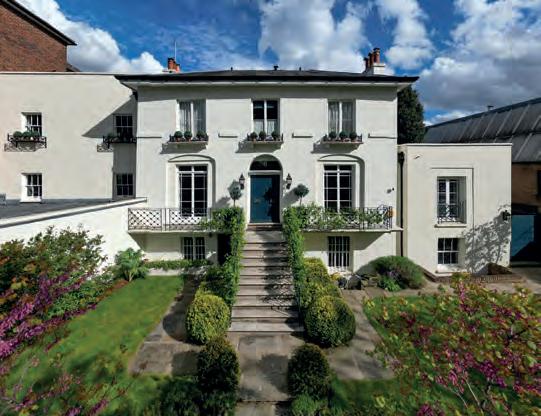


47 INTERIORS NEWS
The latest launches and luxurious new lines
48 INTERIORS TRENDS
We explore how the use of stone surfaces can transform bathroom design
51 AT HOME WITH
Architect Josh Piddock’s Stoke Newington flat is a sanctuary of colour and calm
54 DESIGNER PROFILE
For textile designer Chrissa Amuah, stroytelling is the heart of good design; she introduces her brand, AMWA Designs
59 A CAPITAL EDUCATION
Explore the advantages of learning a language
63 HOT PROPERTY
Discover our property of the month, a Georgian gem in St. John’s Wood
54 63






Embrace the sensual warmth of Promenade Sous Les Étoiles. Exotic, smoky opulence awaits.






Discover our latest fragrance at Harrods.




£2,295,000
A recently built and distinctively designed contemporary four/five-bedroom, two bathroom house located on this desirable quiet tree-lined avenue close to both the beautiful open spaces of Golders Hill Park as well as the thriving and vibrant shopping, dining, café and transport hub of Golders Green.
The ground floor provides a large reception room with views of the gardens, and the lower floor boasts a beautiful fully fitted kitchen open-plan to a dining/family room which enjoys direct access to the rear garden. In addition, there is a study/bedroom four, guest WC (with plumbing for a shower), a generous sized utility room and storage area. The principal bedroom with en-suite bathroom and dressing room/bedroom five is on the first floor, and the second floor offers two further bedrooms and a family bathroom. This bright and generously proportioned home provides 2,312 sq ft/215 sq m (gross) of accommodation and enjoys a 73' south-facing rear garden and off-street parking for two cars.




£4,750,000
An exceptional four-bedroom family home (2,585 sq ft / 240.15 sq m) beautifully remodelled into a contemporary residence in a prime Hampstead enclave, directly opposite Hampstead Ponds and the Heath. Recently refurbished with meticulous attention to detail, the house combines period character with refined finishes, including Rosie Uniacke lighting and bespoke blinds.
The lower ground floor offers a reception room opening to a custom Plain English kitchen and conservatory, alongside a guest cloakroom/ utility. The raised ground floor features a bright double reception with high ceilings. The principal suite spans the first floor with a luxurious en-suite, complemented by three further en-suite bedrooms.
Outside, the home enjoys a landscaped 55 ft rear garden and front/rear patios.
Set within the desirable South Hill Park Conservation Area, a family-friendly neighbourhood with no through traffic and direct access to the Heath.
The leading estate agent for Hampstead and the surrounding areas

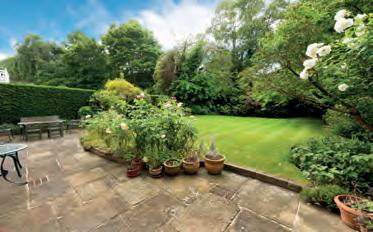
CLOSE, NW11
We are delighted to present this charming Grade II listed six-bedroom family home, ideally located in a highly sought-after cul-de-sac off Hampstead Way, directly adjoining the green open space of the Heath Extension.
Set behind beautifully maintained communal gardens, this elegant residence offers over 2,000 sq ft of light-filled living space arranged across three floors. The ground floor features a welcoming entrance hall, a spacious double-aspect reception room, a separate dining room, and a family kitchen/breakfast room.





The upper floors comprise a principal bedroom with en suite shower room, 5 further bedrooms, and a modern family bathroom.Further highlights include a first-floor rear terrace and a stunning, private south west-facing rear garden.
Conveniently located just 0.6 miles from the open spaces of Golders Hill Park and 0.7 miles from Golders Green Underground Station, the property is also within easy reach of a variety of local shops and amenities.

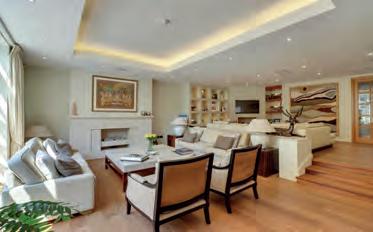
ROAD, N2

A superb, magnificent detached bespoke family residence, positioned in one of the areas most coveted locations, backing directly onto Hampstead Golf Course. This outstanding family home is set behind security gates and is excellently well-positioned with uninterrupted views over Hampstead golf course.
Featuring generous living, entertaining rooms, with great proportioned bedroom accommodation. Additionally the property includes leisurefacilities comprising of a gym, sauna & steam shower room along with an indoor swimming pool & jacuzzi providing direct access to the manicured landscaped sun facing garden



www.glentree.com
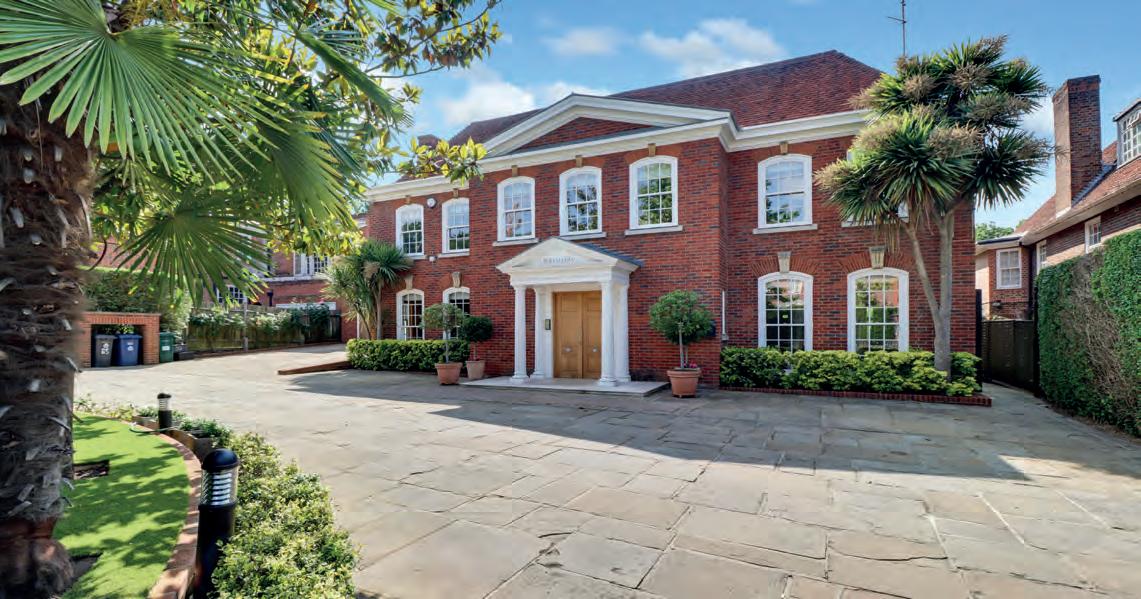
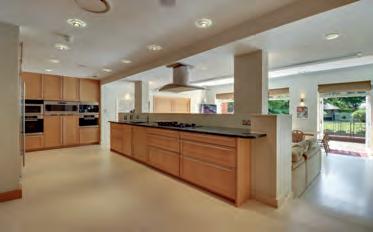
The carriage driveway offers parking for multiple vehicles further including an integral double garage. Viewings are encouraged, with homes of this calibre and quality rarely available for sale.
Located on the west side of Winnington Road, adjacent to the distinguished The Bishops Avenue, the property enjoys a peaceful setting backing on to Hampstead golf course with its thriving private member’s club. .


Downshire Hill, NW3
£7,890,000
An exceptional Georgian home on one of Hampstead’s most prestigious streets. Beautifully restored across three floors, this elegant residence offers four spacious bedrooms, two reception rooms and a modern kitchen. Showcasing a blend of period features and contemporary style, there is the added luxury of a charming outside space that provides a peaceful spot to relax and unwind away from the hustle and bustle of the city, energy rating d.
Dexters Hampstead. 56 Heath Street, London, NW3 1DL T: 020 7433 0273 E: hampsteadsales@dexters.co.uk

Wells Rise, NW8
£3,750,000
Ideally located close the Royal green space of Regent's Park, this stylish townhouse presents versatile living throughout. Nestled in a quiet enclave, the property has four bedrooms and three bathrooms. Complete with off-street parking, further benefits include fantastic transport connections and delicious eateries nearby, perfect for access across the capital, energy rating d.
Dexters St John's Wood. 4 St Ann's Terrace, London, NW8 6PJ T: 020 7483 6300 E: stjohnswoodsales@dexters.co.uk

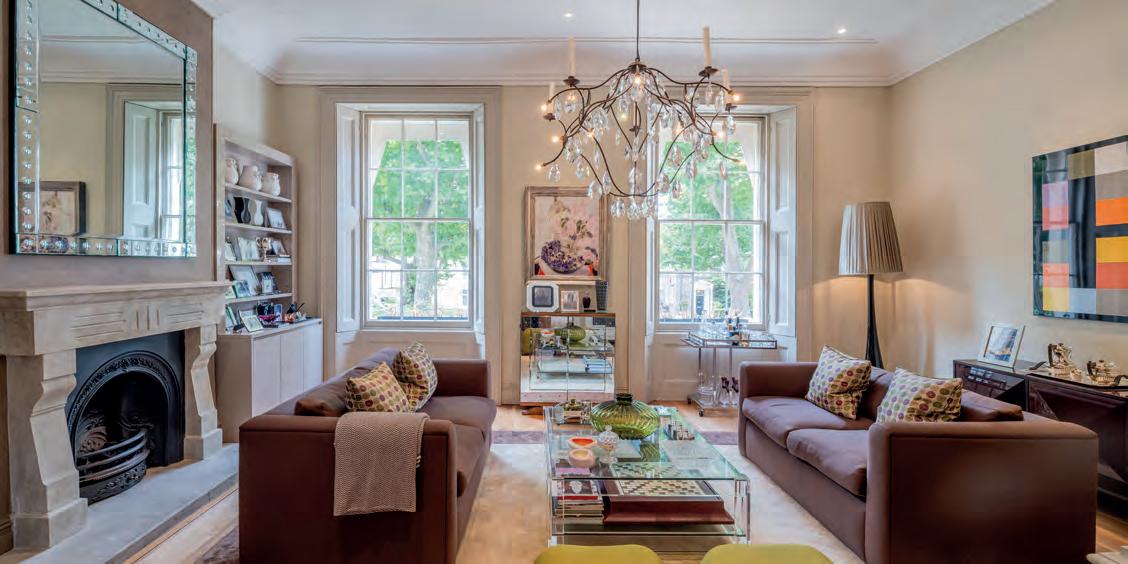




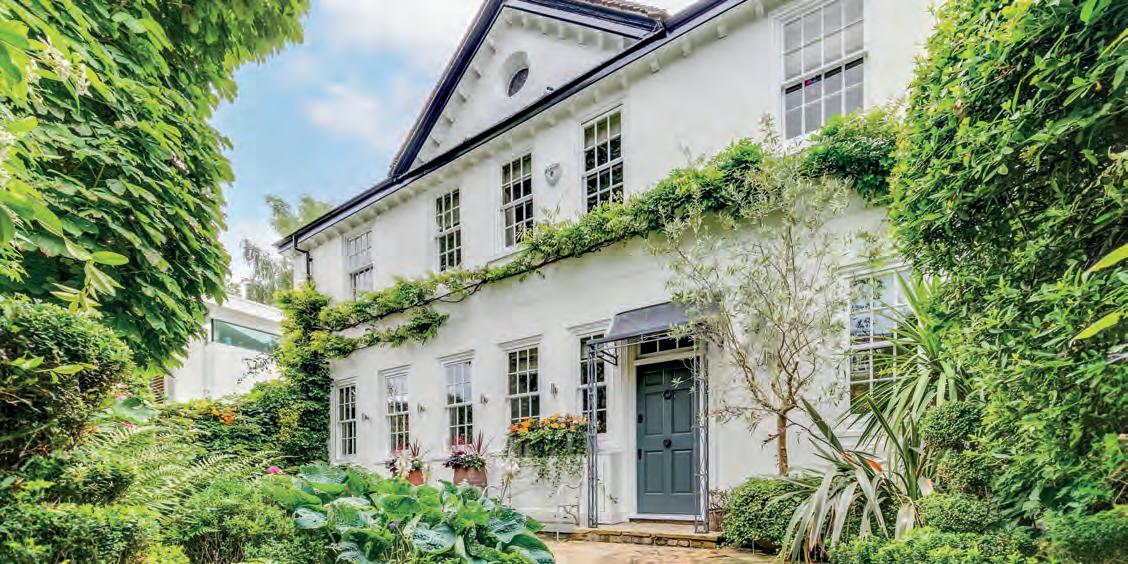











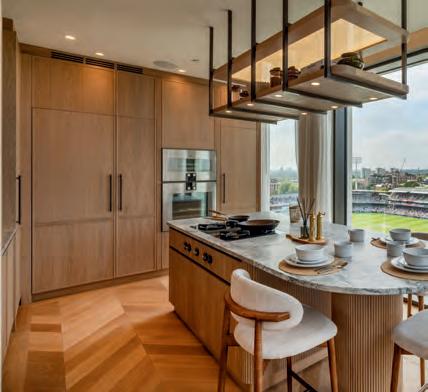






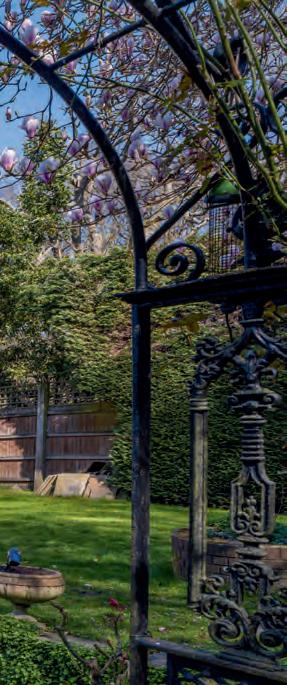
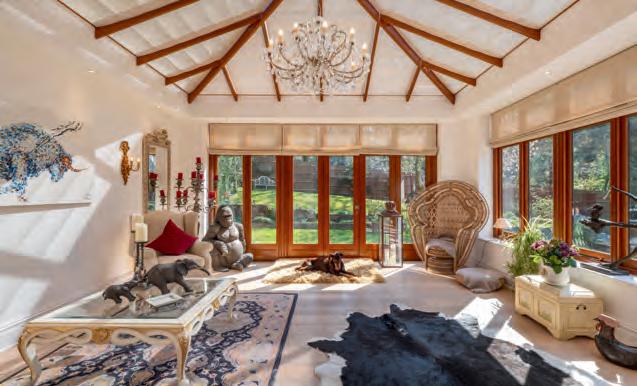


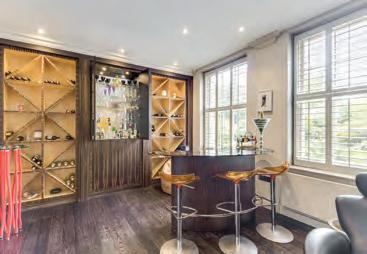



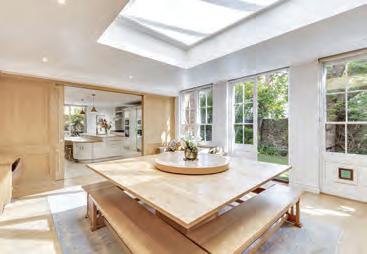


An outstanding detached residence (12,567 sq ft/1,167.47 sq m) set back behind a secure carriage drive on this prestigious tree-lined boulevard.
The property is in excellent condition throughout and features a magnificent 139 ft west-facing garden, large indoor swimming pool, passenger lift serving all floors and off-street parking for 6-8 cars in addition to 2 integral double length garages.
Hamilton Terrace is one of the finest addresses in London and is conveniently located for the shops and cafés of both St John’s Wood High Street and Maida Vale, enjoying excellent transport links to Central London via St John's Wood Underground Station (Bakerloo and Jubilee Line) and Maida Vale Underground Station (Bakerloo Line).
FREEHOLD SOLE SELLING & LETTING AGENT ASKING PRICE £27,500,000 OR AVAILABLE TO RENT AT £25,000 PER WEEK UNFURNISHED



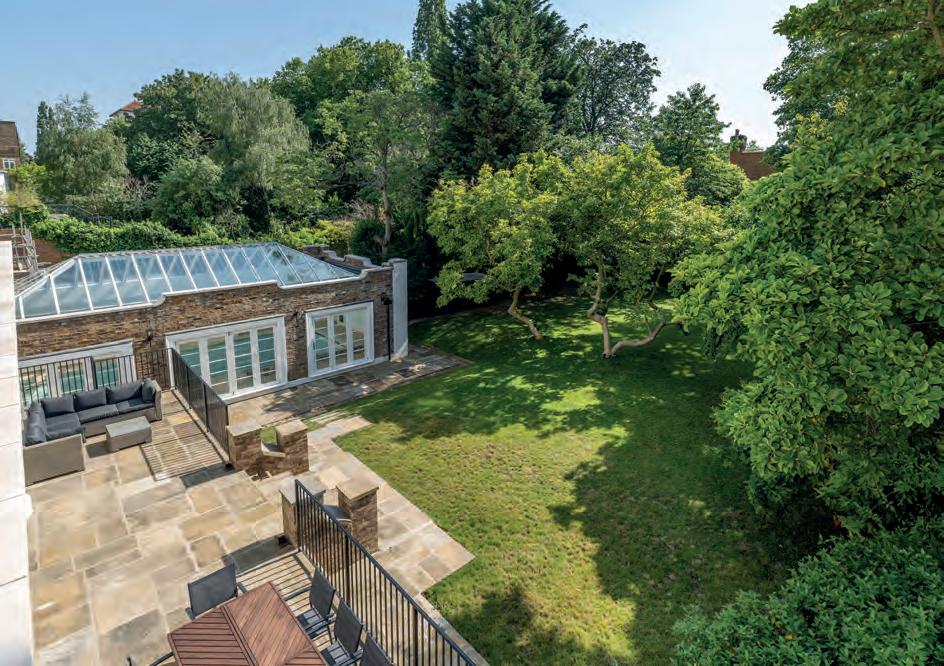


Principal Bedroom with En-Suite Dressing Room and Bathroom, 6 Further Bedrooms, 4 Further Bathrooms, Shower Room, Reception Hall, 32 ft x 31 ft Drawing Room/Dining Room, Family Room, Large Kitchen/Breakfast Room, Garden Room, Study, Gym, Second Kitchen, Indoor Swimming Pool/Leisure Area, Changing Room, Separate Staff
Accommodation comprises of 2 Bedrooms with En-Suite Shower Room, Utility Room, West-Facing 139 ft Garden with Patio Area, Carriage Driveway with Off-Street Parking for 6-8 cars and 2 Integral Double Length Garages, Passenger Lift serving all floors, Large Terrace accessed from the Principal Reception Room. Council Tax: Band H. EPC: C.
HAS ARRIVED
It’s the scent of a city that never quite sleeps, where lights reflect in wet pavements and music spills out of doorways. Inspired by London after dark, MIDNIGHT captures that moment when the night begins to blur, when laughter echoes between buildings, cultures collide and strangers become friends.

AVAILABLE NOW AT RNDL.CO.UK
1 Let’s Stay Home orange print, £14.50 (inkanddrop.com) 2 Lay Me Down quilted bedspread in marmalade, £175 (frenchbedroom.co.uk) 3 Sandstone Red Pembroke stripe cotton robe, £69 (pigletinbed .com) 4 Brown stoneware oak leaf jug, medium, £16.99 (giselagraham.co.uk) 5 Arlo velvet armchair, £415 (peppermillinteriors.com)
6 Tranquillity, amber glass candle, £19.95 (st-eval.com) 7 Brandon table lamp in opaque and rust red, £99 (cultfurniture.com) 8 Carron 5kW ECO 2022 woodburning/multi-fuel stove, red enamel, £1,055 (renaissanceathome.co.uk)
9 Amala red cushion, £85 (linwoodfabric.com)
10 Brown and coral espresso cup designed by Yuta Segawa, £27 (notjustashop.arts.ac.uk)





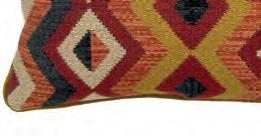







It’s the season for cosying up at home; this month, we’re falling for russet shades, indulgent homewares and lazy luxury





















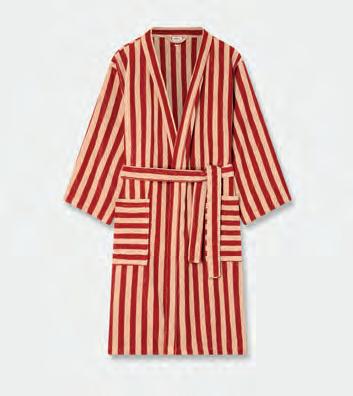







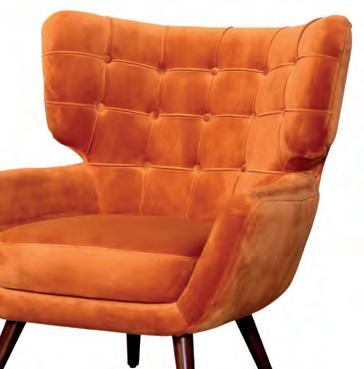







What to see and do in the Capital this October
This landmark exhibition charts 25 years of the inimitable duo’s provocative practice. Over 60 monumental pictures will fill the gallery, tracing their journey into the 21st century, where digital distortion, vivid colour and sharp social commentary collide. The artists mine the everyday – from headlines to street signs – to create unsettling yet magnetic portraits that unflinchingly tackle themes of sex, class, nationalism and mortality. Visitors will see brand-new works from The Screw Pictures, reflecting on the artists’ later years with characteristic wit, and a special collaboration with the Philharmonia Orchestra adds a further layer of spectacle. Unmissable. 7 October-11 January, Southbank Centre, Belvedere Road, SE1 (southbankcentre.co.uk)

Affordable Art Fair
Battersea Park will once again play host to one of the Capital’s most vibrant art events as AAF returns this autumn. More than 100 galleries from around the globe will showcase contemporary works with prices starting at just £100, from household names like Grayson Perry and Anish Kapoor to exciting emerging talent. Highlights include a dramatic installation by Glasgow-based artist Beth Shapeero, a specially curated exhibition for Black History Month, and the much-loved Recent Graduates display, spotlighting the UK’s most promising young artists. Visitors can also look forward to Art After Dark evenings with DJs, drinks and workshops, plus Family Mornings at the weekend complete with face-painting and kids’ creative activities. Perfect for seasoned collectors and first-time buyers alike. Battersea Evolution, Queenstown Road, SW11 (affordableartfair.com)







Immersive, chaotic, and with a good measure of gin, this riotous new Pride and Prejudice parody transforms The Vaults into Pemberley’s ballroom, where the audience sit beside a chequered dancefloor as the story unravels before them. Expect servants delivering drinks to your seat, Regency dance lessons, dubious proposals, cameos from Keira Knightley and Claudia Winkleman (sort of), and yes, that wet shirt moment. Fresh from a sell-out run in Australia, the London debut brings the 250th birthday celebrations of literature’s sharpest observer to suitably irreverent heights. Equal parts performance and party, it’s wild and witty – one hot ticket! Until 25 October, The Vaults, Launcelot Street, SE1 (pliedandprejudice.com/london)

Now in its twelfth year, the UK’s leading celebration of Korean music spans jazz, classical, post-rock, electronica and experimental sounds, bringing major international artists to venues including the Barbican, Southbank Centre, Royal Albert Hall and Kings Place. Highlights include trailblazing post-rockers Jambinai performing with the London Contemporary Orchestra, pianist Seong-Jin Cho giving the world premiere of a new concerto by Donghoon Shin with the London Symphony Orchestra, and Park Jiha’s spellbinding mix of traditional instruments, minimalism and ambient soundscapes. Running through October and November, this wide-ranging festival is an unmissable chance to experience the depth and innovation of Korea’s music scene. 1 October-20 November, various venues (kccuk.org.uk)




























A bold new exhibition transforms Somerset House’s Embankment Galleries into an immersive playground. Expect choreographic installations, interactive experiments and live performances. At its heart is the practice of Sir Wayne McGregor, whose long career has redefined dance through collaborations with world-class dancers, artists, musicians and technologists. Visitors can experience AI-generated choreographic dialogues, light installations that respond to human movement, meditative soundscapes and large-scale digital commissions. This is both a retrospective and a glimpse into the future – where the human body meets infinite possibility. 30 October-22 February, Strand, WC2R (somersethouse.org.uk)




















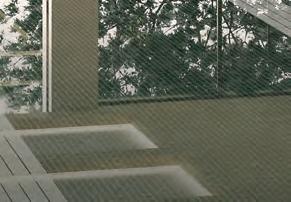








Games, gifts and gorgeous skin are on the cards this month, plus the debut of the season’s first little black dress – lifestyle editor-at-large Martine Montgomery has got October style covered
I’m still recovering from my near brush with glory at the UK Backgammon Open in Leamington Spa – semi-finals of the Last Chance, no less. Not bad for someone who occasionally forgets to double. Flushed with triumph, I nearly rewarded myself with a new board – until I saw the price (roughly the same as a small car). So, I suggested to David that breakfast in bed might be better served on one of Tamara von Schenk’s perspex trays. Her new collection is inspired by board games: dice, tea, toast – bliss. (tamaravonschenk.com)
And then fate intervened. A girlfriend revealed that Dunhill are relaunching their legendary boards next year – the very ones my father used to parade into Crockford’s or Aspinall’s, cigar in hand, while my mother and I had supper and politely pretended not to hear the dice. Honestly, I think those boards were my first great seduction. (dunhill.com/gb)
Enough nostalgia – the real challenge now is Christmas. Godchildren, birthdays and a looming US trip mean I need to be organised. At Selfridges, I discovered a new jeweller, Phoria. Their ‘hook-up’ chain rings are two bands with a sprinkling of stones linked by a whisper of chain. Romantic, symbolic, irresistible – I bought one for my goddaughter so we will always feel connected. (phoriajewellery.com)
Speaking of jewellery, I recently headed to the King’s Road with a friend who was in search of a tasteful gift for her son who is about to turn 18. At Reis – a Turkish brand – we discovered the perfect gold bracelet. Simple, masculine and refreshingly free of leather or rope, it is inspired. (@reisjewelleryuk)

As for me, I’ve been investing in my skin. LPG Endermologie at the French Pharmacy in Marylebone is my new obsession: non-invasive treatments that smooth, firm and, crucially, stimulate collagen. A few sessions in and my face looks fresher, the texture more refined. Prevention is, after all, the chicest cure. They offer body treatments, too, that friends swear by, and I plan to try them out very soon. I’ve also added SkinSense to my arsenal – a clever new rich cream for mature skin. (lpg-group.com; skinsense.co.uk)
Looking at the diary, we are going to be busy, so I’ve stocked up on witty hostess gifts. Alternative Scents make candles with cheeky slogans – funny, inexpensive and infinitely better than chocolates. And if they’re not to someone’s taste, they can be relegated to the loo, where they’re sure to raise a smile! (alternativescents.net)
Finally, something to wear. I’ve just invested in my first little black dress of the season from British designer Alice Temperley and I’m in love. Here’s to a sparkling month ahead. (temperleylondon.com)








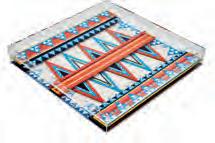







As she makes a return to screens with the new series of Slow Horses this month, Ruth Bradley reveals that working with her childhood hero is the cherry on the top of a dream role


Words by Liz Skone James
Ruth Bradley hadn’t actually watched Slow Horses when the part of Emma Flyte came up. “I had heard it was great, and obviously I was like, wow, Gary Oldman and Kristin Scott Thomas are in a show together, I need to watch that,” she explains. “But I think that’s the story of my life; there’s just so much great stuff to watch… so it was on my list, but I hadn’t seen it yet when I was sent the scenes.”
This fact is perhaps less surprising when you realise the timelines involved – viewers might have only been introduced to Emma, Head of Security for MI5 and leader of The Dogs, at the beginning of season four last year, but discussions about the part began in 2022, when the first series of the Apple TV+ show had only just debuted. “Season one was brilliant, but it was kind of like a sleeper hit. I think it’s become a bit of a word-of-mouth success. So, at that stage it wasn’t what it is now,” Ruth reasons.
Even so, she did not originally know what it was that she was auditioning for. “You just receive watermarked sides. So basically, just scenes with different names, and a fake name for the project,” she reveals. “I didn’t know when I first read the material what the show was. When I did find out, it made sense as to why it was so brilliantly written. I just think the books are fabulous, and Will Smith, the showrunner is so amazing, so that alchemy jumped off the page when I got the scenes initially.”
It is, undoubtedly, a dream role, and for Ruth, there is one particular highlight. “I mean, it’s always Gary for me,” she exclaims. “Gary was my idol as a kid, and I really wanted to be him, so it never gets boring. It never gets de rigueur, or commonplace. It’s always a pinch me kind of moment, to be doing a two-hander with somebody who was the reason you wanted to become an actor, really. So, they are always my favourite moments on the show.”
How were those first day nerves when faced with a childhood hero, I ask. “I am just trying to remember, I’m sure I did feel nervous,” Ruth admits. “But what was much stronger was my excitement. A friend of mine explained that the physicality and the internal workings of the feelings in your body when it comes to nervousness and excitement are actually the same – it’s just how you decide to frame it. So, that really makes sense with my first scenes with Gary, I guess because I was just so excited, maybe I was nervous, but I couldn’t get a hold on that. I just couldn’t wait to get on the set and work with him, really. And I still feel that way!”
Fortunately for Ruth, she can look forward to working with Gary for at least a little longer. “We’ll definitely be seeing another season – I know it’s been commissioned,” she confirms. “That’s what’s great about the show as well, I know so often you’re waiting so long for something, but with this, at the end of each season, you can see a little trailer for what’s going to happen. So, yeah, there is more to come…”
For now, season five has just premièred, and Ruth is finding her stride with the part. “This time around, Emma kind of became very second nature,” she tells me. “I mean this was the second season, so yeah, I felt her even more in my bones this year. With this show you can read ahead with the books, so, I had a kind of an overall arc of where I knew she was going, which meant I could really lean into playing certain things. She’s a bit of an ice queen in the fourth book, and I really wanted to lean into the, I don’t know, maybe cockiness at the beginning of season four. But she has to kind of check herself a bit by the end, because obviously season four is a wild rollercoaster ride for Flyte. When she comes into five, she’s in a very different place, and maybe, I think, a more grounded place. It went hand in hand really – what Flyte is feeling and what I was feeling.”
Flyte is certainly a complex character; what exactly is it that makes for a good part, I ask Ruth. “Darkness and light, like three dimensions – the whole scope of human nature,” she explains. You know, I think really, it’s about the broad spectrum of the human, the complexity of being human, that makes for a good role. And it’s not always there, in scripts, but when you read it, you know it’s there.”
Evidently this is a non-negotiable for Ruth, when it comes to taking on new work. “I try to say no to things; that’s really the thing that I feel like we have as actors. You know, there’s a lot of rejection, and there’s a lot of up and down, but your ‘No’ is yours. So, if I read something, and I think, I don’t see what I’m looking for, I’m pretty comfortable to say no and to not know what’s coming next, which probably seems wild, but that’s all part of the gamble of it. It is scary, but I guess the longer I’m doing this, the more I’m like, well, I’ve just got to have faith, and something will come up. And sometimes I think I must be insane, but then I’m like, well if I was looking for a safe and easy ride, I would be doing a different job!”
Acting certainly doesn’t offer job security; how does Ruth cope with the uncertainty? “Tenacity. Blind faith,” she shrugs. “Some combination of the two, and there must be something about the fact that I am like a dog with a bone. I just can’t let it go – that’s not an option. And, I mean, I know it’s not a quality, but I’ve had a huge amount of luck, and that must be a part of it.”
“GARY WAS MY IDOL AS A KID… IT’S ALWAYS A PINCH ME KIND OF MOMENT, TO BE DOING A TWO-HANDER WITH SOMEBODY WHO WAS THE REASON YOU WANTED TO BECOME AN ACTOR”
Over the years, Ruth has also learned the importance of not comparing herself to others. “There’s a huge notion of competition in this career, like you know, who’s doing what, and obviously so many of my contemporaries are my friends… I think I’ve learned that competition doesn’t serve me at all – like I can be in competition with myself, but when I get dragged into discussions that feel judgemental or competitive, I step out, and I’m so much happier as a result. I think that’s the biggest thing I’ve learned, and that there is space for all the women in this industry. I think probably when I was a kid starting out, the word on the street was that there wasn’t, but there definitely is, and the more I embrace that, the better everything is.
As uncertain as it can be, this is the only job Ruth has ever wanted to do. “I always thought I was an actress, before I really knew what it was; I was always interested in the psychology and the emotion, and performing that, to nobody,” she admits. Unbeknownst to Ruth at that point, her mum had actually been an actor, too. “She had taken a few years out to raise me and my siblings. And she went back to the theatre when I was eight, which was totally unbelievable to me, because I thought I was the actor! It turns out she had been there doing it all the time! And it transpired that I had been in the rehearsal rooms when I was six months old – she took a hiatus when my brother was born, so she had been an actress when I was really small, and I had sat in rehearsal rooms all day, every day. I was speaking to an actress lately who was in one of those shows, and she said that when I was a baby, I just sat there and didn’t make a sound, I just watched. So, I think really, that’s probably why I always wanted to do this, because I had witnessed it when I was preverbal. So, it has always been there, and it’s always been what I wanted to do. There’s never been any other path for me and still isn’t. That’s it, and I’m sure it’s got something to do with my mother.”
As well as her mother, Ruth will always thank that particular theatre company for setting her along the path she is now on. “They were incredible. They are called Passion Machine, and they were huge in Dublin,” she tells me. That early love of the stage remains strong. “I haven’t done any theatre in about six years, but that is absolutely what I’m desperate to do next,” she reveals. “I used to think I wanted to play Lady Macbeth, but now I’m not sure… if it comes my way, definitely. But that’s one of those things that I think, in my 20s, I was like, yeah,
but now so many amazing people have done it, and it’s difficult to go into a classical role like that, I think. So, at the moment, I’m interested in doing something either new, like really new writing, or something that’s being staged again that we haven’t seen in a long time.”
Whether or not that will materialise remains to be seen – it is especially hard to know what the future holds in an industry like acting. Indeed, when it comes to planning ahead, Ruth says that she prefers to take things a day at a time. “I’m all up for change, but I never think beyond kind of this evening!” She laughs. “Where do I see myself in 10 years’ time? Probably just doing what I’m doing and being very grateful for it. And painting a room, probably; trying out a whole new interior design style!”
Is the latter something she particularly loves, I ask. “I really enjoy doing up my home. I love interior design. I’m a serial mover, I move all the time – so, every time I move, I have realised that it is an art form to me,” she admits. “My style has kind of changed with each one I’ve done; it’s like I’m always trying to lean into something different. So, I have done the hygge thing, and at the moment it’s definitely colour drenching maximalism. Every corner has got something going on. Even today, I was like, I might paint that ceiling red, you know. It’s definitely my maximalist era! And the brilliant thing is that you can always restart a room when it is finished! It’s like a big canvas, isn’t it, your home, and so it should be. In an ideal world, you should walk into it, and feel like, oh, this is my soul reflected in here. It’s just kind of getting the time to do it. But I enjoy it, so yeah, it will never be finished.”
Home right now is London, Ruth reveals. “I moved here as a teenager, and during lockdown we left and moved to Sheffield – you know sold up and bought up there and did that whole thing. But I came back two years ago, and essentially started from scratch,” she tells me. “I think leaving made me realise how much I love London. And what do I love about it?
I love that you can get any kind of food, at any time of the night. I love that you can just get into town in no time at all, and go to see an incredible play, or walk on the South Bank, or pop into the National Gallery, or visit that gorgeous church in the middle of the Barbican. There is just so much that I love, I could go on all day, but I think London itself is a character that I’m in love with and always will be!” I couldn’t agree more.
The new series of Slow Horses is now streaming on Apple TV+.


latest in luxury fashion, beauty and healthy living
There are many wonderful things about living in the Capital, but the city buzz can make it hard for us London dwellers to feel at one with nature. Which is why Chuan Body + Soul, the gorgeous spa at The Langham, has just launched an exciting new partnership with Rhug Wild Beauty.
The collaboration brings together Chuan’s heritage in Traditional Chinese Medicine with Rhug’s holistic, farm-toskin ethos, offering unique treatments that are both indulgent and environmentally responsible. All the indulgent treatments on offer look utterly divine, making it hard to choose a favourite, but we love the sound of the Wonders of Mycelium facial, that draws on foraged ingredients from the Rhug Estate. The soothing treatment incorporates handmade poultices crafted from organic matter, combined with gentle yogic stretches, and has been designed to relieve congestion, ease tension, and induce a profound state of relaxation, leaving you glowing inside and out.

Or, if you’re after a whole-body experience, the Awakening Moon Ritual begins with guided stretching and incorporates a Tibetan singing bowl ritual. It has been designed to target meridians, release heat, reduce water retention, and restore energy, while calming the nervous system and promoting deep relaxation. Truly out of this world.
Wonders of Mycellium is priced from £190 for 60 minutes, and Awakening Moon Ritual is £285 for 90 minutes. The Langham, 1C Portland Place, W1B (020 7973 7550; langhamhotels.com)

Luxe lounging Autumn is in the air, and rather than mourn the passing of summer, we’re embracing the arrival of cosy season. And we’ll be doing it in serious style. Renowned British designer Pearl Lowe has just launched a luxurious new line of silk dressing gowns, a tribute to British craftsmanship, vintage glamour, and everyday elegance.
Each piece of elevated loungewear is designed and handmade in the UK by skilled seamstresses. Designed with the


























flattering cut and feminine flair
Pearl is known for, the gowns are crafted in Liberty silk. Each gown is made to order – minimising waste and ensuring impeccable fit. The epitome of British fashion values, this slow-fashion approach champions local artisans and timeless style.
Pearl tells us: “After the success of our spring Liberty gowns, I wanted to offer something even more sumptuous – dressing gowns that feel like a hug. Each piece blends vintage charm with modern luxury, designed to be treasured for years.” From £345 (pearllowe.co.uk)



































Notting Hill based contemporary jewellery artist, Ming Lampson, has celebrated a quarter of a century with the launch of a very special collection of one-of-a-kind jewels. ‘25’, which launched at the end of last month, is a reflection of how jewellery and gemstones tie people and places together, inspired by the vibrant streets around Ming’s west London studio. Each of the 25 extraordinary pieces showcases her highly original designs, bold use of colour and masterful craftsmanship.




Highlights include a street-style chunky chain necklace, which has been elevated to a modern Art Deco emerald and diamond collar, while a rare matching pair of Mexican fire opals dazzle as rings designed to be worn in tandem, and multi-coloured pavé sapphires offer a vibrant reflection of the kaleidoscopic spirit of the Notting Hill Carnival. Ming has said that she wants to make a jewel look as if it has come together by magic, and this collection is true 21st century alchemy. min ewellery.com
Ancient wisdom meets modern wellbeing in a treatment that rebalances body and spirit –with transformative results
Words by Ali Howard




Self-care takes many guises, but few feel as deeply restorative as acupuncture in the hands of a true expert. Five Elements Acupuncture, an ancient healing practice based on the idea that mind, body and spirit are made up of the five elements found in nature – Wood, Fire, Earth, Metal and Water – is less about quick fixes and more about restoring balance at the deepest level. I meet Asha Chong in her serene treatment room on Wimpole Street for a thorough consultation. She is warm and open, her calming presence immediately putting me at ease. The questions get personal – everything from sleep patterns to emotional triggers – but I’m intrigued to learn how this intel might relate to the theory of Five Elements, so I give it gladly. It feels more like a friendly conversation than a medical



consultation, and by the time Asha picks up her first needle, I already feel held.
During the treatment, Asha explains the philosophy in a way that feels both ancient and refreshingly modern. Each element, she tells me, represents not just a part of the natural world, but also a facet of human health and personality. Wood is growth and determination, Fire is warmth and connection, Earth is stability, Metal is clarity, and Water is wisdom. The key to wellbeing lies in balance, with each element supporting the others like instruments in an orchestra. If one is out of tune, the whole composition falters.
In my case, Asha says, my dominant element is Fire. This means I am naturally expressive, open and connected, but if the Fire element is out of balance it can lead to restlessness, anxiety or burnout. The treatment, then, is about supporting the weaker elements so that
Fire doesn’t overwhelm. The musical metaphor comes up again – my body, she says, is like an untuned piano. Her role is to bring my whole system back into harmony.
When the needles go in, I’m surprised at how gentle the process is. Even with needles in my feet, I remain completely relaxed, thanks to Asha’s reassuring manner. She checks my pulses frequently, explaining how they reveal the state of my organs and how well they are communicating with each other. At one point, the sensation is such that I ask how many needles I have in me. To my surprise, she smiles and tells me she’s already removed them all. The shift is so subtle, so seamless, I barely notice.
By the end of the session, I feel transformed. When Asha checks my pulses one last time, she confirms that everything is “in tune” – my body working together in balance, my energy flowing as it should. Stepping back out onto the street, I feel as if I’m floating – like I’ve been gifted a new body. It’s a dreamlike feeling, though I do remind myself to take extra care crossing the road, I’m so blissfully dazed.
An appointment with Asha feels less like a treatment and more like a re-tuning of body and spirit. You might arrive sceptical, but I urge you to give it a go – the sense of balance and renewal is truly remarkable. Initial consultation, including first treatment, £295. 19 Wimpole Street, W1G (07736 286 840; ashachong.com)
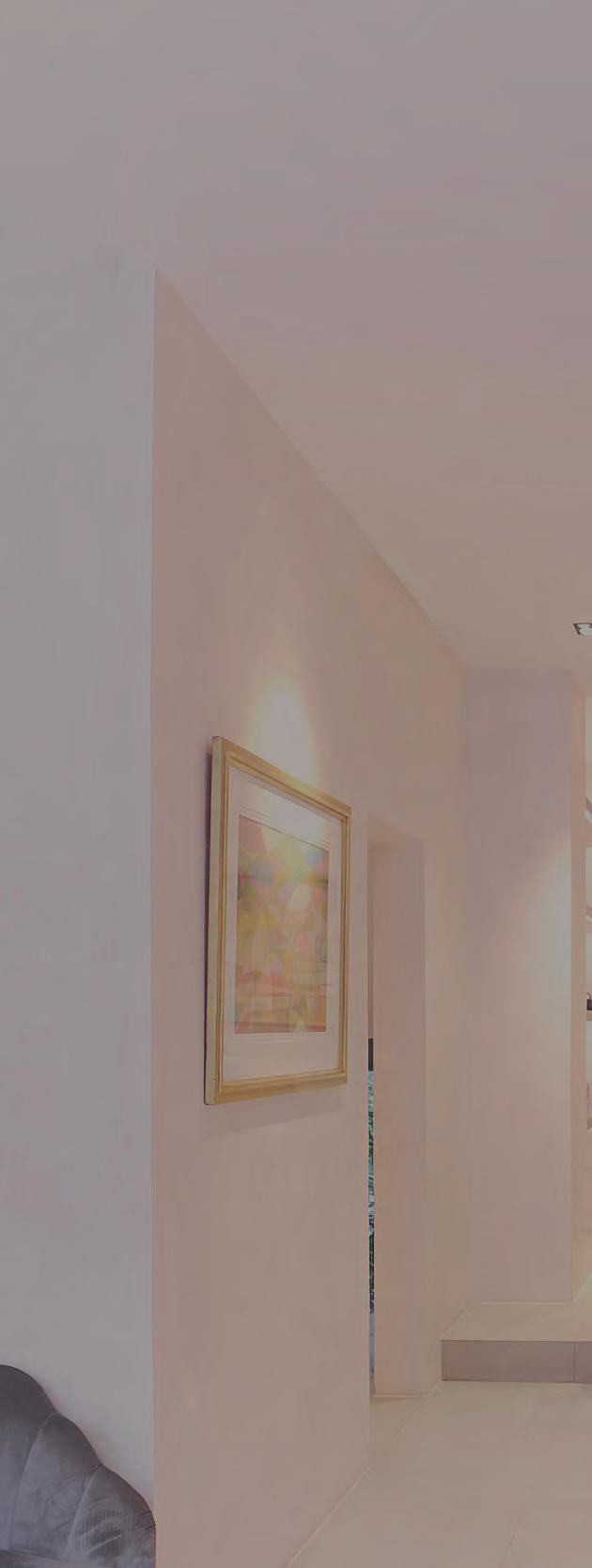












Don’t let the pumpkin flesh go to waste this month; these delicious doughnuts are the perfect Halloween party treat. And they’re available in store all month if you don’t fancy doing it yourself

TIME
1 hour 35mins, plus proving, overnight resting and cooling.
For the doughnuts
• 250g strong white bread flour plus extra for dusting • 30g caster sugar
• ¾ tsp fine sea salt • Grated zest ½ small lemon • 2 medium free-range eggs • 8g fresh yeast or 4g dried active yeast • 65g unsalted butter, softened • 2 litres oil (rapeseed/ canola, sunflower or corn) for deep frying, plus extra to grease • 200g caster sugar for dusting
For the filling
• 1 small squash or pumpkin (about 400g) • 60ml double cream
For the crème pâtissière
• 3 medium free-range egg yolks • 60g caster sugar • 30g plain flour • 250ml whole milk • ½ vanilla pod, seeds scraped
For the toffee topping
• 250g caster sugar • 50g unsalted butter
METHOD
Make the doughnuts
1. To make the dough, mix the flour, sugar, salt, lemon zest, eggs and yeast with 75g water in a bowl until it comes together.
2. Turn the dough out onto the work surface and knead for 5 minutes using the heel of your hand. Let the dough rest for 1 minute.
3. Start to add the butter a quarter at a time, kneading it in until it’s all incorporated.
4. Knead the dough for a further 5 minutes until it is glossy, smooth and very elastic when pulled.
5. Return the dough to the bowl, cover with a plate and leave to prove until doubled in size, about 1½ hours.
6. Knock back the dough (knead for a minute or two in the bowl to knock out any large air bubbles), re-cover the bowl
and chill overnight.
7. The next day, cut the dough into 10 pieces, about 45-50g each.
8. Dust the 2 baking sheets with flour or grease with a little oil.
9. Roll the dough into 10 smooth, tight buns and put them on the prepared baking sheets, leaving room for the buns to expand.
10. Cover lightly with a damp tea towel and leave to prove for about 2 hours, or until doubled in size.
1. Next make the pumpkin purée. Heat the oven to 150°C fan/gas 3½.
2. Halve the pumpkin and remove and discard the seeds and stringy core. Chop each half into quarters, carefully peel off the skin, then chop the flesh into 1cm cubes.
3. Put the cubes on an oven tray and bake for 1 hour until the pumpkin is quite dry and lightly golden.
4. Transfer to a food processor/ blender and pulse to a purée. Leave to cool.
5. Meanwhile, prepare the crème pâtissière. Put the egg yolks and sugar in a bowl and whisk with a balloon whisk for a few seconds, then add the flour and whisk again.
6. Put the milk, vanilla pod and seeds in a heavy-based saucepan and gently heat until nearly boiling.
7. Slowly pour the hot milk over the yolk mixture, whisking constantly to prevent curdling, then return the mixture to the pan and cook over a medium heat, whisking
constantly for about 3 minutes until thick.
8. Pass the mixture through a fine sieve into a bowl, then place a sheet of baking paper/cling film on the surface of the crème pâtissière to prevent a skin forming (don’t forget to keep your vanilla pod –wash and dry it to use to flavour sugar). Leave to cool, then chill.
9. Whip the double cream in a large bowl until thickened to stiff peaks (when you lift out the whisk, the tips of the peaks stay vertical).
10. Measure out 200g of the cooled pumpkin purée and add to the whipped cream along with the crème pâtissière (briefly beat the crème pat to loosen if it’s stiff).
11. Gently fold together using a large metal spoon in a figure-of-eight motion until the mixture is well combined.
12. Fit the nozzle to a piping bag and fill with the pumpkin custard, then chill.
1. When you’re ready to fry the doughnuts, half-fill a large heavybased saucepan with the oil (or use a deep fat fryer) and heat to 180°C.
2. Carefully remove the proved doughnuts from the tray by sliding a floured dough scraper or spatula underneath, then gently lower into the oil. Don’t overcrowd the fryer – cook 2-3 at a time, depending on the size of your pan.
3. Fry for 2 minutes on each side
MAKES 10 doughnuts
until golden brown – they will puff up and float.
4. Remove the doughnuts from the fryer with a slotted spoon and put on kitchen paper to drain, then toss the doughnuts in a bowl with the caster sugar while still warm.
5. Repeat until all the doughnuts are fried. Leave to cool before filling.
ASSEMBLE THE DOUGHNUTS
1. Make a small hole in the crease of each doughnut with a butter knife (anywhere in the ‘band of truth’ – the white line between the fried top and bottom.)
2. Take the piping bag out of the fridge and slowly pipe the mixture into each doughnut until plump (about 60g per doughnut).
MAKE THE TOFFEE TOPPING
1. Finally, prepare the toffee topping. Put the sugar in a heavy-based saucepan set over a medium heat.
2. Heat for several minutes until the sugar has melted (shake the pan to help it melt evenly); keep heating until it has a rich caramel colour.
3. Take off the heat and add the butter (be careful – it will spit). Keep stirring until you have a smooth caramel.
4. Very carefully dip one half of each filled doughnut into the caramel. Leave to set (it will be crisp like a crème brûlée), then devour. breadahead.com
Tuck into the latest foodie news from across the Capital
Cé la Vi, the modern Asian rooftop restaurant and bar has just made its European debut and looks set to become one of the Capital’s most exciting dining destinations. Crowning the top of Paddington Square, it opened last month, becoming west London’s highest rooftop restaurant.
Offering sweeping skyline views, Cé la Vi is spread across two levels, and features a stunning outdoor terrace. The restaurant, bar and lounge opens from midday until late, evolving throughout the day from elegant lunches and sunset drinks to sultry dinners and late-night cocktails.
Cleverly crafted cocktails with an Asian sensibility are served from an open central bar – think elevated classics with regional ingredients and seasonal twists, including a wickedly good shiso sargarita. And it goes without saying that the food menu is equally special – bold and contemporary, it is rooted in modern Asian cuisine Vibrant, seasonal dishes celebrate Asia’s diverse culinary heritage and are crafted using the highest quality ingredients and locally sourced produce. Signature plates include miso seabass with Szechuan green chilli sauce; crispy red snapper; and Wagyu beef tataki with truffle ponzu. A truly elevated foodie experience – this really is the life. 17th & 18th floors, 1 Paddington Square, W2 (020 4630 7888 ; ldn.celavi.com)
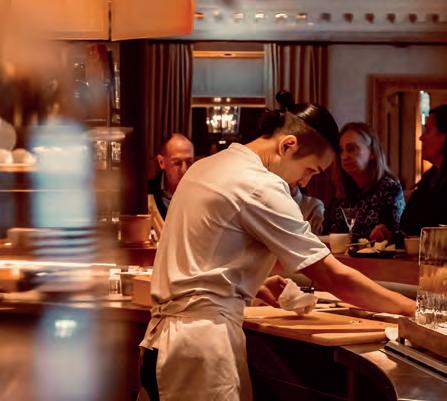
This month only, diners at Kioku Sake Bar – the intimate bar from Michelin starred chef and third-generation sushi master Endo Kazutoshi located at Raffles London at the OWO – can experience a very special ten course standing menu.
The concept takes inspiration from the Japanese tradition of tachigui – an informal way to eat sushi while standing at a counter, traditionally found in bustling sushi bars.
Standing Sushi at Kioku Sake Bar will be a contemporary take on this immersive dining experience, where guests and chefs can interact whilst enjoying exceptional cuisine. The specially designed ten-course menu will be served over 45 minutes The bar is home to the largest collection of Sake in Europe, and to complement the sushi menu, a meticulously crafted pairing of mini cocktails and sake is being served alongside. This is fast food as you’ve never seen it before. The experience is priced at £70 per person and is available on Wednesday evenings until 22 October. Ground Floor, The OWO, 2 Whitehall Place, SW1A (kiokubyendo.com)


NEW M EN U A royally inspired treat Theatre fans listen up: The Soho Hotel, part of the design-led Firmdale Hotels group, has just launched a new experience, offering a theatrical twist on the classic British tradition. Available now, the exclusive SIX the Musical Afternoon Tea has been designed in collaboration with the hit West End show. Celebrating the six wives of Henry VIII, the crowning glory of the new tea menu is a regal selection of pastries, each representing one of the iconic queens. The dainty sweet treats include Aragon’s Crown of Honour; Boleyn’s Strawberry Biscuit; Seymour’s ‘Heart of Stone’ Blueberry Choux; Black


Forest Cake of Cleves; Howard’s All You Want is Rice Pudding; and Parr’s Tudor Rose and Lemon Curd Macaron.
Served alongside these are a delectable spread of Tudor inspired finger sandwiches and savoury bites, including a crayfish manchet roll, and handmade pork pie with sage and fennel, plus freshly baked scones with clotted cream and preserves.
Diners can choose to toast the queens with a special signature cocktail designed to complement the tea menu: The Ex-Wives features flavours of peach, grapefruit, and rosemary, while the non-alcoholic Lady in Waiting is mixed with elderflower, peach, and jasmine. A spread worthy of Hampton


Court Palace if ever there was one Priced from £45 (£57 with The Ex Wives cocktail), the tea will be served daily until the end of the year.
4 Richmond Mews, W1D (020 7559 3007; firmdalehotels.com/ hotels/london/the-sohohotel/afternoon-tea)
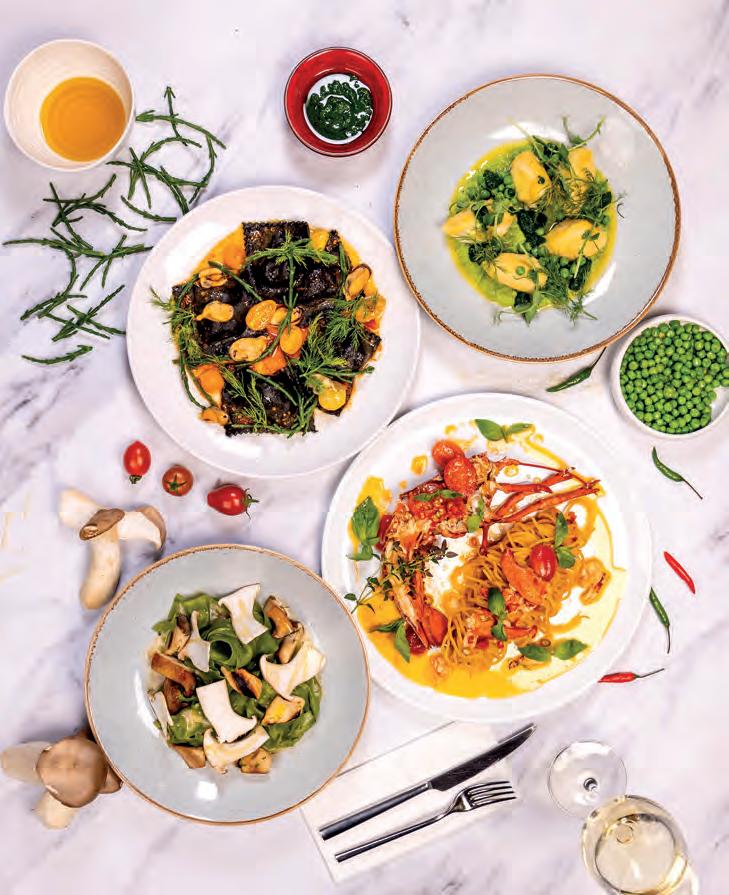
With carb-laden pastas and calorie-rich sauces, can an Italian meal be truly healthy? The menu at this independent, family run Italian proves so
Words by Alison Cork
Mele e Pere sounds a bit like ‘mother and father’ in one of the Romance languages but is actually Italian for ‘apples and pears’, a nod to Cockney rhyming slang and fitting for a basement eatery.
At first glance, the menu looks traditionally Italian with masses of carbs – pizza, pasta and all the usual suspects. However, my companion, Bill and I were on the hunt for a healthy, lean, high-protein lunch that wouldn’t send us to sleep and would sustain us through until dinner.
With that in mind, you might consider one course enough for lunch, but we had a lot to catch up on and so went for starters too – well, sort of… Bill enjoyed a classic herby bruschetta, feeling little guilt thanks to all that tomato, and a slice of sourdough which, contrary to what you might think, is a clever bread option as it contains pre-biotics, which support gut health
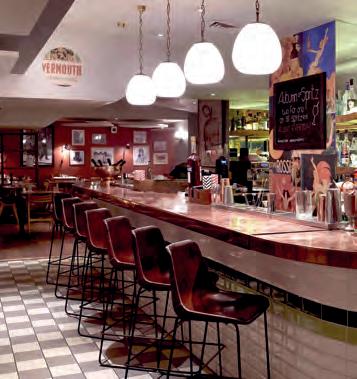
and can have a lower glycemic index than other breads. In other words, it won’t spike your sugar levels causing that mid-afternoon crash.
Meanwhile, I used a neat trick; as with many menus these days, there was a nibbles section, so I opted to substitute a couple of its nutritional heavy hitters for a traditional starter. I couldn’t resist smoked almonds and olives. If you fancy something with a bit of a kick, their ascolana olives, stuffed with ’nduja Calabrese are worth checking out.
Of the mains, fillet steak cooked precisely medium rare with a fresh rocket and Parmesan salad was protein heaven for me – not only is steak the second-highest form of protein (beaten only by pumpkin seeds!) but Parmigiano contains as much protein as chicken. Contrary to popular belief, eating something like this at any time of day, but particularly at lunch, will not leave you feeling heavy or tired because the body will digest the protein with ease. My only minor caveat was that I’d have liked a higher ratio of salad to meat.
Bill wanted something a bit lighter and more complex, and much enjoyed a generous tranche of cod with a deeply flavoured seafood sauce and potato strands. White fish is another great source of lean protein and, as the dominant element, allowed for a little naughtiness with the crisply fried potato and luxurious sauce. As ever, in both nutrition and life, it’s all about the 80-20 rule! We estimate neither main course went over 600 calories.

Another neat trick is to always have water on the table and start with a glass before ordering anything else to drink. If you fancy a beer, you’ll be delighted to learn that low/no-alcohol lagers contain about 40 calories per 330ml bottle compared to 150 for the boozy equivalent. Bill succumbed to a single 175ml glass of bright, crisp rosé – a canny choice as pink wine tends to be slightly lower in calories than red or white. You may be interested to know that Mele e Pere also has one of the best Vermouth selections in the Capital, so if you fancy dipping your toe in, why not pull up a seat at their delightful copper bar – a destination in its own right – and enjoy their Happy Hour, along with some sharing plates.
Unlike some basement restaurants, this place has tremendous warmth and character, and great service, too. Happily sated, but not sleepy, we climbed back up the ‘mele e pere’ and out into a rainy Soho. 46 Brewer Street, W1F (020 7096 2096; meleepere.co.uk)



NeatNights: Bringing a West End style cocktail experience to your home – one unforgettable party at a time
In a world full of cookiecutter catering and forgettable events, NeatNights is a refreshing shake-up – quite literally. Born out of a passion for genuine hospitality and high-end cocktails, this boutique service is redefining what it means to host at home, in the office, or anywhere in between.
Locally rooted and fiercely independent, NeatNights focuses on London – from Marylebone to Totteridge – but regularly pops up in Surrey, Buckinghamshire and Hertfordshire, and has even been seen in client residences and
yachts in Ibiza and Marbella. But don’t expect shouty social media campaigns or influencer-filled reels: many of NeatNights’ most loyal clients are in the public eye, and discretion is part of the package. The team signs so many NDAs, you’ll just have to trust the buzz behind closed doors.
At the heart of NeatNights is founder Jimmy Ingram, an exindustry insider with deep roots in London’s award-winning bars and restaurants. Every event is personally led from enquiry to execution, with Jimmy himself behind the bar on the night. From


the very first call to last orders on the night, the experience is personal, polished – and most importantly – fun.
“It all started a few years ago when a few of our regulars in the music industry asked if I could make cocktails for a private party at their home,” Jimmy explains. “I managed to get the time off and had a lot of fun! Then they asked again – and referred a friend – but I couldn’t get away from work. That’s when I took the leap, and NeatNights was born. And the rest I can’t talk about…”
Since then, the business has grown, but the mission hasn’t changed: to bring a polished West End bar experience to your home, with the warmth and welcome of your favourite local. The talented team have spent years perfecting their craft in leading restaurants, bars and hotels globally. They’re the heart and soul of NeatNights and passionate about hospitality. Whether you’re planning an intimate 40th birthday at home, a marquee wedding, or a castle takeover, NeatNights creates completely bespoke experiences for guest lists ranging from 50 to 300. The set-ups are flexible and can include:
• Full-service cocktail bars, in a variety of designs and sizes to suit any theme. They’ll also set up on existing bars, kitchen islands and
outdoors for cocktails on the lawn
• Bespoke cocktail menus – choose from over 100 classic cocktails or let the team create your own
• Dry and low/no alcohol bars, with serious attention to flavour, featuring virgin Mojitos, Espresso Martinis, and sophisticated nonalcoholic wines, beers, and fizz
• Masterclasses, where guests can shake, stir, and sip their way through cocktail culture – ideal for smaller gatherings or teambuilding events
• Entertainment partners, including musicians, DJs, live percussionists, and even magicians to elevate the party vibe
• Venue sourcing, thanks to a curated list of partner spaces available for full buyouts, complete with catering, DJs, staff, and of course, exceptional drinks. NeatNights has become a go-to for celebrations in private homes, staff parties in slick offices, and upscale events in unique venues. And whether it’s a low-key evening with friends or an all-out, noexpense-spared party, every experience is tailored to your vibe, vision, and budget. Because at the end of the night, it’s not just about great drinks, it’s about creating the right atmosphere, where everyone can enjoy themselves. And that’s where NeatNights truly shines. To find out more, see neatnights.london

Words by Ali Howard
There are places that seem purpose-built for a life less ordinary – places where the air feels softer, the pace a little more languid, and the backdrop almost suspiciously flawless. Quinta do Lago is one of them. Tucked into the protected Ria Formosa Natural Park on Portugal’s southern coast, this celebrated private resort has long been a draw for those in search of sun, sea and seriously polished surroundings. Yet for all its glossy golf greens and palm-lined boulevards, Quinta do Lago isn’t content to rest on its laurels. Its vision for 2025 and beyond places wellness, sustainability and community at its heart, promising a way of living that leaves you lighter.
The base for our stay is The Magnolia Hotel, Quinta do Lago’s own pocket of Palm Springs nostalgia. With its candy-hued neon, mid-century shapes and playful spirit, it brings a hit of colour and character to the Algarve’s otherwise understated palette. Rooms come with private verandas for morning coffees in the sunshine, while the seven wood-clad cottages offer tucked-away family hideouts complete with lounge areas and kitchenettes. It’s upbeat, relaxed and refreshingly unpretentious – all within strolling distance of the resort’s glossier corners.
After a warm welcome and something cold by the pool, we head to KOKO for an indulgent and lingering lunch that reminds us that, yes, we’re definitely in Portugal. Recently renovated, this airy restaurant is a favourite for its wood-fired pizzas and laid-back family-friendly vibe. It’s also home to Q Coffee, Quinta’s own bean-to-cup venture, where baristas host taster sessions

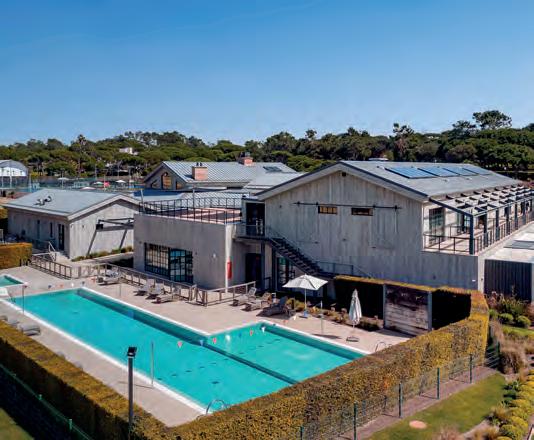

in a slick glass-fronted roastery. The scent of freshly roasted beans hangs in the air, setting the tone for a stay where the smallest details are considered.
Quinta do Lago’s dedication to wellness is in the fabric of daily life here. Nowhere is this more evident than at The Campus, the resort’s state-of-theart multi-sports hub. Designed to attract elite athletes and keen amateurs alike, it’s an impressive blend of glass, steel and sunshine, complete with high-performance gym, cycle studio, heated 25-metre pool and even stadiumspec locker rooms.
Leaving the heavy lifting to dedicated gym bunnies (of which there are plenty here), we spend a morning doing our own version of exercise –namely reading poolside between leisurely laps, before refuelling at Dano’s, a polished sports bar-restaurant where the burgers are generous, the salads vibrant and the vibe convivial. Afterwards, a padel lesson awaits. It’s fast, fun, and surprisingly addictive.
The Campus is also the stage for Quinta do Lago’s seasonal sports camps, where world-class coaches put youngsters (and occasionally their parents) through their paces in tennis, golf, football and dance. There’s a new running club too, complete with weekly 5km sessions and longer weekend challenges for the more ambitious. For a resort famed for indulgence, it’s disarmingly easy to be active here.
It would be remiss to spend all our time amid the sculpted greens and manicured avenues. Just beyond the resort’s edges, the Ria Formosa Natural Park unfurls in a sweep of salt marshes, lagoons and sandy islands. We follow the raised wooden boardwalk from The Shack car park, the air alive with birdsong and the rhythmic click of cicadas, until the track dissolves into soft sand and sea grass. Gigi’s Bar waits at the end of the bridge – a whitewashed beach shack with rattan parasols and iced cocktails that slip down far too easily as the sun dips low.
If Gigi’s is barefoot charm, Casa do Lago is its sophisticated sister. Perched on the edge of the lake, this whitewashed restaurant is Quinta do Lago at its most cinematic: linen-draped tables on a sweeping terrace, candlelight reflected on water, platters of oysters and grilled local fish arriving to wide eyes and hungry bellies. A pescatarian’s dream.
The following day brings a shift in tempo – and perspective. We are whisked to Q Farm, Quinta do Lago’s sustainable heart. As we wander between neat rows of vegetables and fragrant herbs, we pause to crush leaves between our fingers, tasting and inhaling as we learn about the resort’s commitment to sustainable farming. Our haul of green goodies is later used in a private cooking masterclass with the chef and his team from Casa Velha, the resort’s romantic fine-dining outpost.

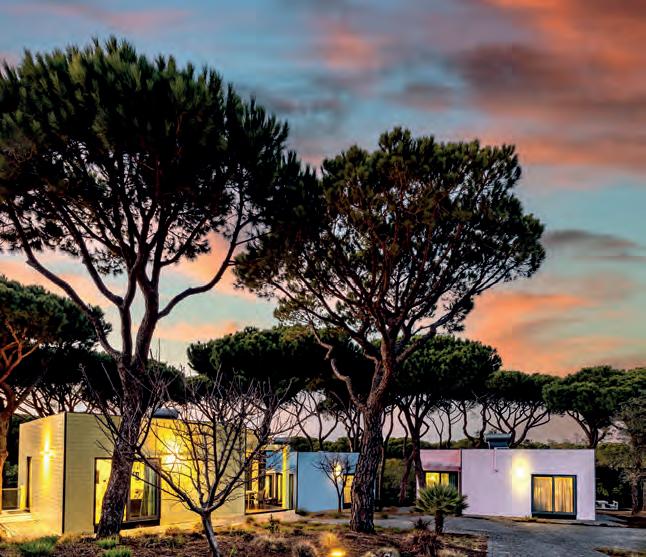
Lunch is served under dappled olive trees at Casa Velha itself, a whitewashed farmhouse-turned-restaurant with pale stone floors, antique wood beams and tables dressed in simple linens. It’s a serene, sensory moment, and a reminder that Quinta do Lago’s appeal lies as much in its rootedness as in its polish – made all the more satisfying by knowing we had a hand in creating it.
Quinta do Lago’s ambition is most visible in its bricks and mortar. The resort has recently acquired the five-star Conrad Algarve, a vast property of 154 suites, 80 soon-to-be-refurbished apartments, two villas and six bars and restaurants. The addition strengthens the resort’s position as a worldclass destination, with guests drifting between its serene spa, palm-fringed pool decks and soaring atrium lobby like players in a sunlit dream.
Beyond the resort’s edges, the Ria Formosa Natural Park unfurls in a sweep of salt marshes, lagoons and sandy islands
Meanwhile, just beyond the North Course fairways, the last chapter in Quinta do Lago’s master plan is being written. The North Grove Plots – nine prime parcels of land, each with panoramic mountain views – offer the rare chance to build a bespoke home in this cloistered enclave. There’s little in the way of restrictive design codes here, giving buyers the freedom to create something extraordinary amid the cork oaks and golf greens. It’s an audacious move, underscoring the resort’s evolution from holiday haven to fully fledged community.
Not all of Quinta do Lago’s innovations are so visible. Tucked within The Campus is the brand-new Q Reformer Pilates studio, a minimalist sanctuary where pale maple machines stretch out under soft lighting. We slip off our shoes for a beginner session and soon find ourselves lengthening, stretching and focusing with an intensity that quiets the mind as much as it works the body. We leave walking taller – both literally and figuratively.
Our final evening brings us to UMAMI, the resort’s elegant Asian-fusion restaurant, where lacquered wood meets sleek marble and plates arrive like edible artworks, so much so that it feels entirely rude not to snap a few Instagram pics before we indulge. Between sips of saké and forkfuls of black cod, we catch ourselves reflecting on just how multifaceted this place is. Quinta do Lago may be known for its fairways, but its real charm is in the way it shifts so effortlessly between moods –from the laid-back ease of a beachside bar to the elegance of fine dining, to the infectious buzz of fitness and team sports.

We walk back to our hotel through still, lamplit streets. The resort feels measured now, its energy dialled low, its edges softened. For all its polish, what lingers is the balance – between wild and curated, active and unhurried – and that’s exactly what makes Quinta do Lago feel so distinct.
DETAILS
The Magnolia Hotel offers a standard double room from €116/£98 on a B&B basis. The family cottages are available from €188/£159 per night on a B&B basis (+351 289 005300; themagnoliahotelqdl.com) For information on the resort, see quintadolago.com

A hidden gem on Morocco’s Atlantic coast, La Sultana Oualidia offers the perfect spot to escape from it all, with the focus firmly on wellness, indulgence and good food
Words by Liz Skone James



We are staying in a lagoon suite that is set high up in one of the turrets. With vast windows on three sides, it has a gloriously bright and airy feel, and the thick stone walls and marble floor ensure that it is deliciously cool, too. A huge four poster sits in the centre of the room, so high that a wooden step has been provided to help guests get into bed. In the corner, fretwork screens hide a marble bathtub that is perfectly sized for two, while outside on the terrace, a Jacuzzi bath offers the perfect spot to soak up the views. And the indulgence continues in the bathroom, where the amenities include spa-like toiletries and a Dyson hairdryer and straighteners. We will clearly want for REVIEW
Stepping out of the car in front of the hotel, we are greeted by a fresh sea breeze; after Marrakesh’s unrelenting heat, it is gloriously welcome. Located in an isolated position beside the saltwater lagoon in the sleepy village of Oualidia, La Sultana sits in lush gardens planted with palm and jacaranda trees, cacti and agaves, and colourful oleander bushes – it is quite the contrast to the barren desert landscape we have navigated to get here.
Though it looks like it has stood for centuries, the fortresslike building – with its thick stone walls, arrow slit windows and turrets – was purpose built, using traditional Moroccan drywalling techniques, in 2007. There are just 12 bedrooms and suites here, making it feel more like a large private home than a hotel.
The service is nothing short of five star, though; we are greeted like old friends and shown to an al fresco terrace overlooking the lagoon, where we are presented with a selection of sweet Moroccan pastries and a cup of steaming mint tea – poured theatrically from a great height. Everything is delicious, and very welcome after our long drive.
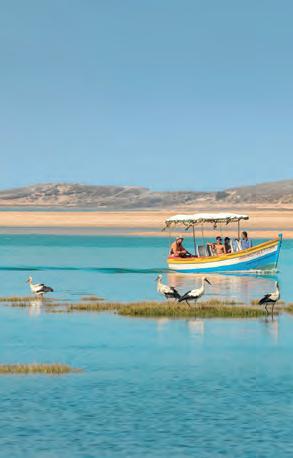





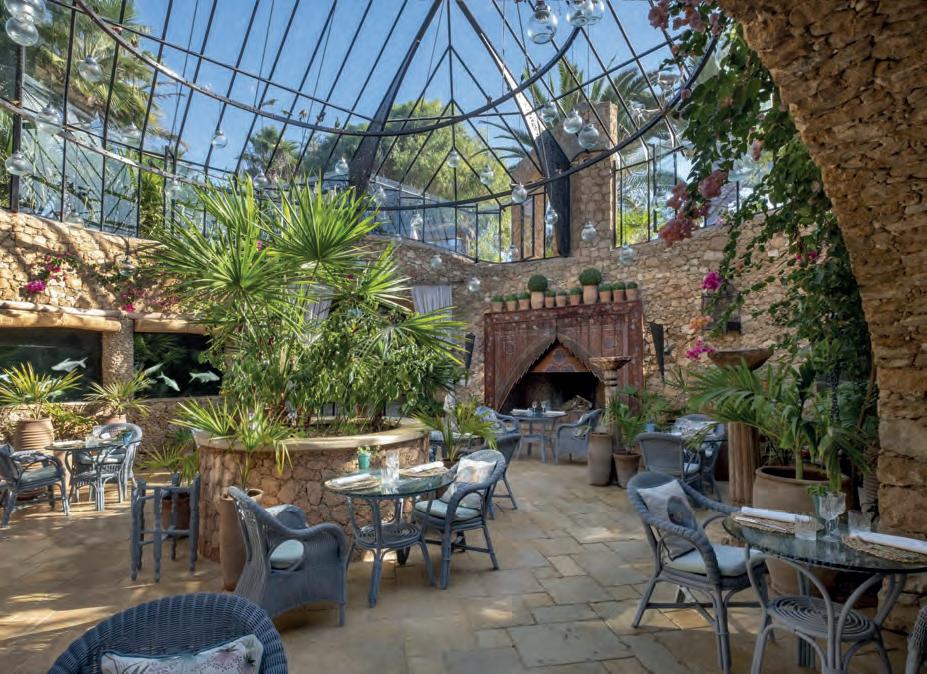
nothing – though should we discover anything lacking, we can contact our personal butler using the mobile phone that has been provided specifically for this purpose. Luxury indeed.
We enjoy a late lunch at La Table de La Plage, where the vibe is relaxed. Locally caught seafood is the star of the show, complemented by a rainbow of fresh vegetables grown on site in the hotel’s organic garden. For me, a stunningly beautiful vegetable tart to start, followed by spider crab linguine. Everything is exquisitely fresh. Afterwards, sleepy from our travels, and full of good food, we venture only as far as the hotel’s peaceful infinity pool, where we admire the view of the tide creeping in across the lagoon’s shores from the comfort of a decadent day bed and take an occasional cooling dip.
Dinner that evening, served in a Berber tent on the beach, is a memorable experience. My monkfish tagine is excellent, but it is trumped by dessert – s’mores cooked over an open fire by the water’s edge, made with homemade marshmallows that are almost too big to fit in our mouths. Sticky but happy, we head back to the suite for a spot of stargazing on the terrace.
The next morning, we are up early to make the most of a sunrise yoga session in the garden, but first, fresh coffee and warm, flaky pastries, delivered discreetly to a small cupboard outside the door of the room. In the garden, we roll out our mats, relishing the opportunity to stretch out in the morning light while taking in the sights and sounds of the lagoon. We have a surfing lesson booked later, so I am feeling quite smug about our holiday activity levels as I order Moroccan pancakes for breakfast, and tuck into more of the delicious pastries from the irresistible buffet spread.
Situated on Morocco’s Atlantic coast, Oualidia is a haven for surfers, and while the towering breakers on the exposed shoreline are for the experienced only, within the safety of the lagoon, the waves are perfect for learners. We are taken from the hotel to the local surf school aboard a traditional Moroccan wooden boat; it is a short trip and gives us the perfect opportunity to see a bit more of the area, including the summer palace of King Mohammed V, who decreed Oualidia Morocco’s first royal beach in the 1940s. Once grand, it is now abandoned and protected by guards, who prevent us from taking photos, but cannot stop us from gawping.
Kitted out with wetsuits and boards, we head out to a sandbar to perfect our ‘pop-up’ – the transition from lying down to standing up on the board – and then paddle out to catch some waves. With the help of our instructor Simo, we have all managed to get to our feet and ride several waves before the 90-minute lesson is over.
It is exhilarating, but exhausting, and our muscles are complaining by the time we return to the hotel – a fitting excuse to check out the facilities at spa. With stone pillars and a domed glass roof over the sun-dappled swimming pool, the

subterranean space has a cathedral-like feel. There is a Jacuzzi, sauna and Hammam, along with five treatment rooms. We have the space to ourselves and enjoy a peaceful swim before indulging in a blissful full body massage.
The rest of our stay passes in a foodie blur – the next day we are treated to a luxurious picnic on a secluded stretch of sand facing the Atlantic. A beautifully set table sits under a canvas canopy; there are oysters from the local farm to start, and a seafood feast cooked on a barbecue follows. Getting to the spot has involved a boat trip and a small hike over the cliffs, so we are in awe of the team from La Sultana who have brought everything here for us. Later in the week, we enjoy a hands-on culinary masterclass in the hotel kitchen, learning how to make chicken, seafood and vegetable tagines. Cooking done, the kitchen team process to the organic garden with our creations and serve us lunch in a thatched hut overlooking the garden and the lagoon beyond. Afterwards, we are treated to a Moroccan tea ceremony, learning about the tea’s history, and how to make and serve it. The higher the pour, the greater the respect and the warmer the welcome, apparently – we are evidently very welcome at La Sultana.
On our last evening, we dine at Jan Janz, the hotel’s newest restaurant, which opened this spring. With a focus on nourishing, health-conscious cuisine, the menu here offers a refined blend of Far Eastern and Moroccan flavours. We tuck into platters of dim sum, sushi and sashimi, and I enjoy a red curry of braised beef served with fragrant jasmine rice. And we round off the meal with delicious mouthfuls of chocolate mochi. The food here has been truly exceptional, as has every detail of our stay. How we will ever go back to everyday life I do not know… but before then, one more night of stargazing on the suite’s terrace beckons.
DETAILS
Rates at La Sultana Oualidia start at £471 per night for a Panorama Room for two people. For more information or to make a booking, see lasultanahotels.com/oualidia
A stylish retreat in the heart of Wales’s Eryri National Park is the perfect getaway, where your only problem is deciding...outdoors, or in?
Words by Katie Hutley


Like most people lured to the dramatic splendour of Penmaenuchaf, I came for the wild: the glory of Eryri National Park (that’s Snowdonia to some), the soul-cleansing scenery, and the rare luxury of stillness, far from the madding crowd. What I didn’t expect was to find a hotel so stylish and inviting it made me briefly question whether I actually wanted to go outside at all.
Perched high above the Mawddach estuary in Dolgellau, Penmaenuchaf (pronounced Penmine-ee-haf, but familiarly known as ‘Pen’) is the country pad fantasy brought to life—grand but unpretentious, it feels more like the second home of your most stylish friend than a stuffy hotel. The stone facade has stood since the 16th century, but inside, it’s all been quietly transformed thanks to a top-to-toe revamp by designer Nicola Harding, whose signature palette of bold colours, vintage finds and warm textures makes every corner feel like the house you wish you could call home. From the gentle glamour of the new lobby bar, which is straight out of a coffee table book on impeccable style, to the nest-like bedrooms and suites with sweeping, heart-stopping views, nothing feels too polished to put your feet up. And you’ll want to: after a day spent in the Welsh wilds, with its welcoming vibe (and roll top baths), it’s the kind of indoors you dream of coming back to.

On a crisp, clear morning, we met the wonderful Kath Goodey from Ride High MTB, who took us into the sprawling trails of Coed y Brenin Forest Park for a guided mountain biking session. Kath set up her business after a career volte face (one of many, in fact), and a longing to return to her childhood passion of biking, and spending time in nature. She’s the best possible advocate for the outdoors lifestyle, and not only made our foray into e-mountain biking accessible, her enthusiasm was positively infectious. After a thorough training session, and trial runs on the purpose-built ‘skill building’ tracks, we set off. City girl that I am, my previous cycling experience has mostly involved dodging black cabs on a Lime bike, so when I inevitably took a (thankfully gentle) tumble whilst tackling an uphill, hairpin bend, I did so with comedic inevitability, and, mercifully, nothing damaged except my ego (well, maybe a bruised extremity or two). Kath, though, was pure joy—patient, funny, incredibly knowledgeable, and the kind of woman you instantly want to be friends with. We whooped through the trees, laughed a lot, and by the end I was almost convincing myself I could take this up back home.
Coed y Brenin is just one jewel in this under-appreciated Welsh crown. The landscape around Penmaenuchaf is every bit as majestic as the Lake District—towering peaks, mirrored lakes, valleys that seem to roll on forever—but without the coachloads and car parks. There were times we felt like we had the whole place to ourselves. Whether you’re hiking up Cadair Idris or meandering around the Precipice Walk above Llyn Cynwch, the sense of space and solitude is rare and addictive. This latter we undertook after mountain biking, and is a true find – a surprisingly gentle incline that’s rewarded with an eagle’s eye view of the valleys below and the estuary winding its way to the sea. A truly magical sight.
That sense of discovery continued in the nearby market town of Dolgellau, where we joined a wine tasting at Dylanwad, an independent wine shop championing a growing Welsh wine scene. I’ll admit I was sceptical— Welsh wine? But we were won over instantly. The tasting was fascinating and genuinely eyeopening, showing how this rainy corner of the UK is quietly producing crisp whites and complex reds that rival their continental cousins. Dylan, our host, regaled us with tales of tracing lost family in Madagascar, of the economic challenges facing suppliers and how they’re rising to them, of the larger than life characters breathing vitality into the industry. He apologised once or twice for “going off on a tangent”, clearly not realising that we were as rapt by his raconteurim as we were impresed with the product! We left
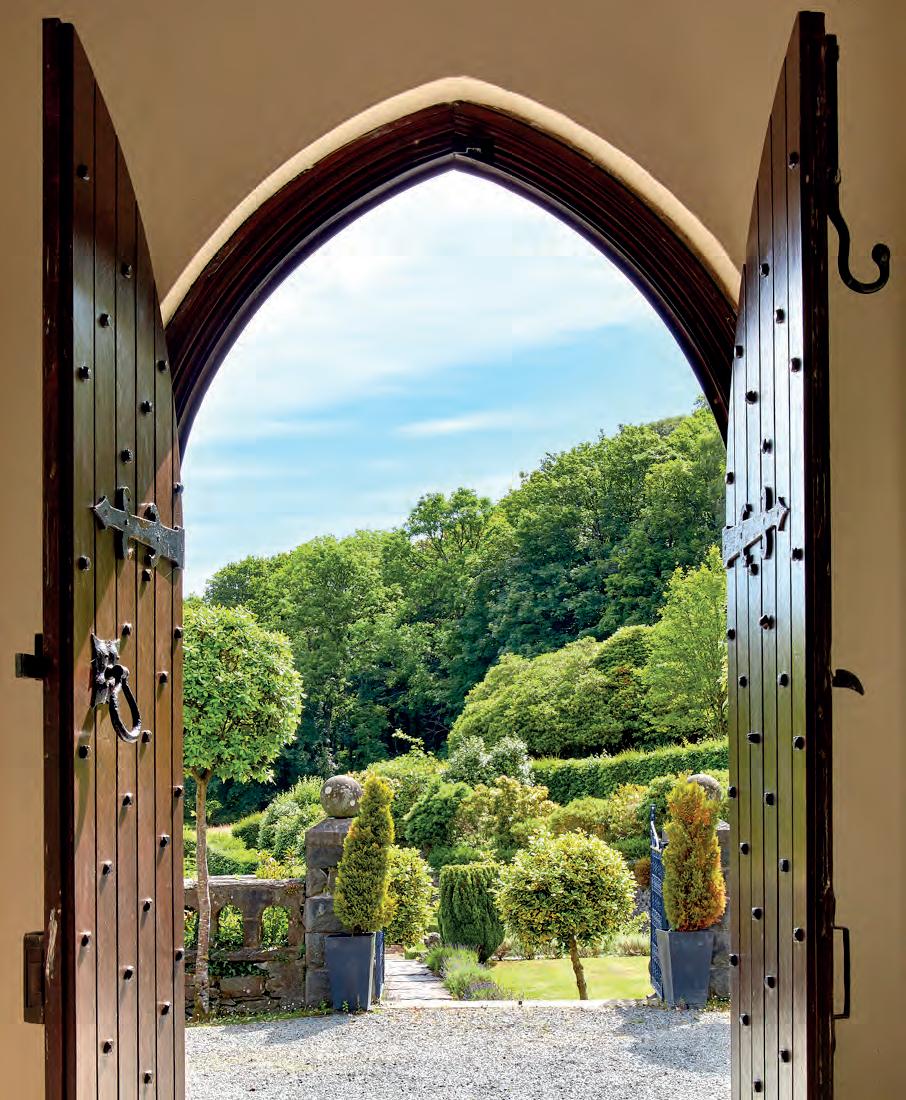

not just with bottles, but stories, and a warm new respect for the Welsh terroir.
Back at Penmaenuchaf, the indoors adventure continued with a baking class led by Head Chef Dan Andree, where we tried our hand at making Bara Brith and Welsh cakes. Even sweeter than the results were Finn and Charlie, the adorable dogs belonging to Dan and Christie, the charming hotel manager. She and Dan have taken wholeheartedly to Dolgellau life, and that love shines through in every element. That’s Pen all over, in fact; where everyone remembers your name, wher, nothing is too much trouble…the ideal retreat, in other words.
And then, of course, there’s the food. Afon, the in-house restaurant, deserves a spotlight all of its own. Dan’s menus—whether à la carte or the tasting option—are built around bold, local ingredients. Venison from Coed y Brenin, sea bass caught off the Welsh coast, vegetables plucked from the hotel’s own garden. Every plate is a mini masterpiece, and the setting—huge windows, warm lighting, ambience softened by the covetable Welsh wool hanging on the wall — only heightens the magic.
Leaving was undertaken reluctantly, to say the least. It’s not just that Penmaenuchaf is beautiful, or that the surroundings make you feel tiny in the best possible way. It’s that it resonates on a deep level; the feeling of peace, the playful aesthetic. I came home inspired to channel Nicola’s joyful mix of heritage and quirk into my own living space (a salvaged dresser here, a pop of burnt orange there… just don’t tell the husband). It’s wild and cosy, elegant and relaxed, steeped in history yet thoroughly modern. It gave me fresh air in my lungs, mud on my boots, a few bruises (thanks, hairpin bend), and some design envy I may never recover from. I’m already pining to go back.
Rates at Penmaenuchaf start from £230 per night, on a B&B basis, with rates in a Mawddach Suite from £650 per night. For more information and to book see penmaenuchaf.co.uk.


Our
Nick Howe Director
RAW ARCHITECTS
Free Consultation
Concept Design
Planning Applications
Construction Documents
Building Regulations
07879

Tormek has taken its decades of sharpening know-how and distilled it into something made for the home cook – the T-1 Morakniv 1891. In soft Linen White, its pared-back Scandi casing slips easily into any kitchen. The real beauty, though, is in the detail: a diamond grinding wheel for effortless edge, a smooth composite honing wheel, and a pop of Morakniv red on the birch handle – quietly covetable, undeniably useful. From £350 (shop.tormek.co.uk)



























Just launched, Ferro is the debut homeware collection from interior designer Tabitha Isobel, created in collaboration with artist-maker Dom Callaghan. This sculptural trio – a wall lamp, mirror and side table – balances London Plane, sourced via Fallen & Felled, with brushed stainless steel in a play of weight, warmth and precision. Handcrafted in Callaghan’s Dartmoor studio and produced in limited editions, the collection is calm, confident and poetic – an elegant study in contrast and craft.
From £750 (tabithaisobel.co.uk)
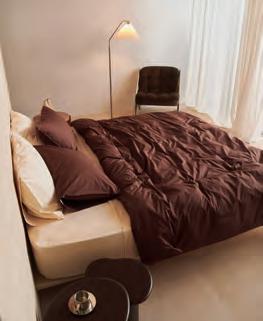
Bombay Sprout’s new Bukhara collection pays homage to the storied Suzani textile, reinterpreting its ancient symbolism through four hand knotted rugs woven in Agra. Made from a wool-cotton blend, each design balances heritage with modernity: jewel-like tones in Samarkand, bold lapis and hazelnut in Khiva, dusky purples in Zarafshan, and cool celadon in Naryn. Richly detailed yet versatile, the collection adds warmth, texture and narrative depth – equally at home in a pared-back flat or a grand drawing room. From £3,720 (bombaysprout.com)

After seven years of cult-favourite linen, Bed Threads is turning its attention to cotton – but not as we know it. The new GOTS certified 100 per cent organic cotton range is light, crisp and consciously made, with a breathable 200 thread count and a durable percale weave. Expect the same pared-back aesthetic in a fresh fibre, available in eight refined shades, from moss to espresso. A natural next step for the brand – and your bedding rotation. From £25 (bedthreads.com)

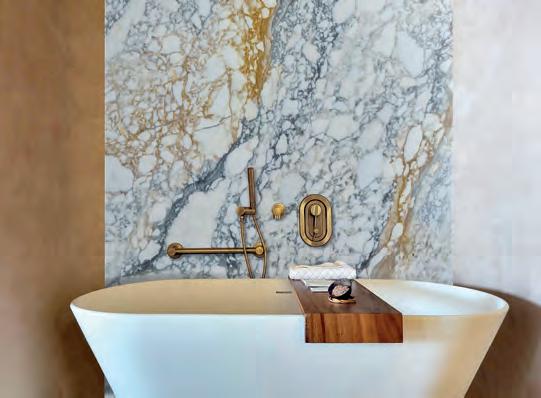
Natural stone is having a moment in bathroom design, and it’s all about celebrating Mother Nature’s own take on maximalism – think of veined marble and richly textured natural stone not merely as surfaces, but as the main event: dramatic slabs, organic patterning, swirling minerals, flecks of quartz, bands of onyx, rippling agate – utilised with full drama. Here, walls flow into floors, showers are framed by dramatic seams, basins and tubs are carved to highlight the natural grain… The effect is richly sensory: polished surfaces glowing under light, honed textures that invite touch, and colours that range from soft ivory threaded with gold to deep green and black streaked with rich cream. Mineral drenching transforms the bathroom into an elemental, immersive space –more sanctuary than utility.
In the serene bathroom at the bottom of this page, Cullifords’ Breccia Medicea marble takes centre stage. The silver and gold veining forms a dramatic backdrop to the freestanding tub, with brushed brass fittings echoing the warm tones. The result is pared-back elegance, where natural stone brings timeless richness and quiet sophistication.

Opulent surfaces are redefining bathroom design, with dramatic stone slabs and precious mineral tones bringing elegance, sophistication and a bespoke feel to spaces designed for both everyday rituals and indulgence
Words by Ali Howard

Tile of Spain’s Concept tiles in grey and black by Baldocer capture the beauty of natural stone while adding a stark modernity. The contrasting step effect brings chic definition to the contemporary bathroom at the bottom of this page, enhancing the sense of depth and architectural interest.
Dramatic and atmospheric, the Palace Infibre Black onyx effect porcelain tile from ROCCIA transforms the bathroom at the top of the page into a brooding sanctuary. With its deep, inky tones and subtle veining, the tile exudes modern luxury, perfectly complemented by the sculptural tub and warm metallic accents.
Ca’Pietra Artisans’ Belvedere granite brings dark drama and undeniable glamour to the bathroom opposite, its bold veining creating a richly textured backdrop. The effect is beautifully lifted with gold-toned accents, from the Art Deco mirror to the brassware, while the granite’s durability makes it as practical as it is luxurious.
With their pistachio and teal tones, deep veining and organic swirls, Bert & May’s green herringbone honed marble tiles set a richly textured backdrop in the bathroom at the top of the opening page. Balanced with brass fixtures, patterned flooring and trailing greenery, the bathroom feels both opulent and fresh, with a hint of enchanted-forest magic.
tileofspain.com)




Studio Merlin’s Sol de Arcilla is a compact Stoke Newington flat reimagined with clay, colour and calm
Words by Ali Howard
Photography by Richard Chivers
Below: a clay plaster
Mondrian-inspired
Bottom: Josh
in

In Stoke Newington’s historic Gibson Gardens, a compact flat has been given a new lease of life by Studio Merlin’s founder, Josh Piddock. The project, named Sol de Arcilla – Spanish for Clay Sun – takes its cues from the brickwork and light just outside the window, creating a home that feels deeply connected to its surroundings. At 52 square metres, it’s a space where every material choice matters, and where art and architecture blur seamlessly.
“I wanted to reference the vibrant clay bricks used in the construction of Gibson Gardens within the flat, as I often find that interiors bear little relation to the buildings they’re part of,” says Josh. “Given that much time would be spent in the kitchen, with its large window overlooking the historic Gibson Gardens façade opposite, it was clear that the view would become an integral part of the room. The internal treatment therefore needed to work with and complement this outlook, which led to the inclusion of clay plaster. As a result, the space feels harmonious, whether looking at the space, or outward through the window.”
That dialogue between indoors and out is evident as soon as you enter. The Clay Sun, a bold yellow plaster circle on the kitchen wall, greets you instantly. “My aim was to create a warm welcome and a focal point for the flat, and the Clay Sun fulfils this design aspiration as soon as you step through the front door.”
The kitchen is where the project’s layering of texture and tone comes into its own. Terracotta units, grey tiles, and steel details sit comfortably together, while the worktop provides a moment of calm. “We didn’t want something too plain, but we needed it to hold its own quietly among a lot of visual texture,” Josh explains. “In a kitchen where terracotta tones, Mondrian-inspired plasterwork, and exposed steel beams are all in play, working with Caesarstone provided a sense of calm – balancing tactile richness with restraint.”
The choice has a practical benefit, too. “The kitchen design was a delicate balancing act, with bold interventions offset by neutral, functional elements forming the backdrop. A key ingredient in making the space work is the Caesarstone’s Cloudburst Concrete countertop: light and bright, it reflects daylight from the window throughout the

room, while its tone harmonises with the clay plaster and off-white paint. This restraint allows the other features to command attention ”
But it’s the plasterwork that feels most personal to Josh. “The Mondrian-style patchwork clay plaster wall feels particularly special. It is a unique feature, yet it works so seamlessly that I sometimes barely notice it. Designing it was a challenge: the wall had to accommodate two doors, a doorway opening directly in front of it, high-level storage cutting into it, a radiator integrated within it, and an exposed steel beam intersecting it. The outcome of countless design decisions is a wall that appears balanced and simple, despite its complexity!”
Sol de Arcilla may be compact, but there’s no sense of compromise. The layout is carefully planned, and storage is integral to its success. “Space is precious in small urban flats, and the key is always getting the storage right; without it, one quickly loses control of the interior. At the same time, balance is essential: it’s easy to over-provide storage, leaving spaces feeling blocky, as though chunks have been carved out of them. For Sol de Arcilla, a mix of in-built, flexible, and curated storage was considered. The master bedroom features almost full-height storage, extending over the door to maximise capacity. In the kitchen, a long run of high-level storage spans the wall above two doors before folding down into the integrated fridge-freezer and concealed pantry. To prevent this extensive joinery from feeling heavy, off-white colour-blocking was used at high level, allowing it to blend tonally with the clay plaster walls and the similarly painted ceiling. In contrast, terracotta low-level units run perpendicular along the window wall, providing warmth and balance.

The


I didn’t want the flat to feel like any other. As a designer trying to create value, I like to question conventions…
This strategy ensures that storage is generous but visually integrated, maintaining both order and lightness in the space. String furniture is used in other rooms to provide a composed mix of storage that’s flexible and doesn’t alter the shape of the rooms.”
The result is a home that feels calm, despite its density of detail.
“I love living in London, but after returning from travelling I often find that city life can feel overwhelming. This makes me value having an oasis to return to – a place shaped by soothing colours, warm materials, and plenty of thriving greenery. For me, it’s important to achieve peace and quiet through architectural interventions to the fabric, alongside creating a frictionless space to move through and live within.”

Of course, that calmness comes with a playful edge. The plaster interventions – the Clay Sun and the patchwork wall – are unapologetically bold. “They’re slightly risky design decisions,” Josh admits, “but ones that make the space truly unique and a joy to live in. I made my mind up early on that I didn’t want the flat to feel like any other. As a designer trying to create value, I like to question conventions, and I find it curious that art is so often reduced to the confines of a canvas or a picture frame belonging to the owner. With Sol de Arcilla, I wanted to create an ‘artified’ home – one in which art is integral to, and inseparable from, the architecture itself. The art belongs to the home and can’t be stripped from it.”
It’s this merging of art and function that defines Sol de Arcilla. A kitchen that reads as an artwork, walls that feel like part of a painting –and yet every detail has a job to do. “The kitchen in particular has taught me that it’s possible to strike a balance between minimalism and maximalism in the same space, albeit the elements require very delicate consideration.”
Balance is what makes the home so compelling: clean-lined furniture and muted tones allow for moments of vibrancy, while every material nods back to the building’s brick façade. There’s a strong sense of context, but also a very personal design language at play. Sol de Arcilla is a small London flat, yes, but it is also a meditation on colour, storage, art, and light. Above all, it is a home designed to be lived in – calm, characterful, and utterly individual. studiomerlin.co.uk; caesarstone.co.uk
Blending Adinkra symbolism with a contemporary edge, the AMWA Designs founder weaves meaning and storytelling into every piece
What drew you to textile design?
My entry into design happened very organically. I actually did my first degree in broadcast journalism, not necessarily to become the next Kate Adie, but I just knew I wanted to work in a creative space. I wasn’t sure exactly what that creative space looked like, so I thought, if I do a degree that gives me great communication skills, then that can be transferable to anything. I’d had a really amazing A Level art teacher called Miss Stubbs and she kept saying to me, “Chrissa are you sure you don’t want to look into textile design?” At the time I didn’t quite understand what textile design was, so I decided to go ahead and do this degree, and I ended up working for BBC Radio for a while, I worked for a women’s magazine for a while… I kept finding myself in creative spaces, working with creatives and wishing I was in their space, but never quite sure what I should be doing, so
I kept doing lots of short courses. Then I did drawing and painting for textile design with Dominique L’Olive at Central Saint Martins and I literally fell in love. It was a six-week course and my life changed overnight.
Your designs marry Adinkra symbolism with a contemporary edge – how do you strike that balance?
It actually comes quite easily because it’s all about our shared humanity, encouraging the best of ourselves through proverbial meanings that speak to our humanity, the environment and social harmony. And those values, I think, transcended any culture, and I think we live in a day and age where that’s even more necessary, especially when you’re living in the global North and you’ve got this fast-paced life that we’ve all signed up for. I think it becomes even more of a need, there’s even more of a thirst for it, so it actually comes very organically to me.


How do you weave storytelling into your work?
There are stories in everything. I think it’s one thing for something to be beautiful, but for something beautiful to have meaning, I feel is more powerful, it transcends time because stories live on forever and it’s really important for me to communicate those stories well. I underpin all my designs with stories. I’m working for a client now on a residential project – he started by telling me how he chose the house, and that he bought it because his daughter had seen the front door and always used to talk about its pink door. I incorporated that into one of the design elements for the project. So yes, storytelling is really important and I’m fascinated by people’s stories and getting to learn and understand more.
What has collaboration brought to AMWA Designs?
It’s brought so much to my design practice, it’s opened doors for me, it’s broadened my horizons, it’s actually made me really proud of myself – there have been instances where I’ve been able to see that, actually, I know more than I sometimes give myself credit for. It’s allowed me to be bolder in certain design making decisions, and collaborating with designers in another field, or another discipline, has introduced me to other materials and now I feel very comfortable in calling myself a multidisciplinary designer. Collaboration is very exciting and there are still lots of brands I’d love to work with.
What can clients expect when ordering bespoke fabrics or wallcoverings?
They’re going to get texture, they’re going to get hand printed pieces. That said, my collaboration with Fabric Bank, a South African digital manufacturer, is my first digital collection, so there is scope and flexibility there. But what I’ve always loved about hand printing is the hands-on approach of being able to change things while you’re standing there at the print table. I’ve always tried to share print sessions on my Instagram stories and I often get comments saying, “Oh my gosh, I didn’t know how involved it was, how physical it was”, but there’s just something really beautiful in being able to say, “let’s add a bit more of this pigment to make it a warmer shade, or make it a cooler shade”, or “let’s do another layer”. I always wanted to be there and to be hands-on.
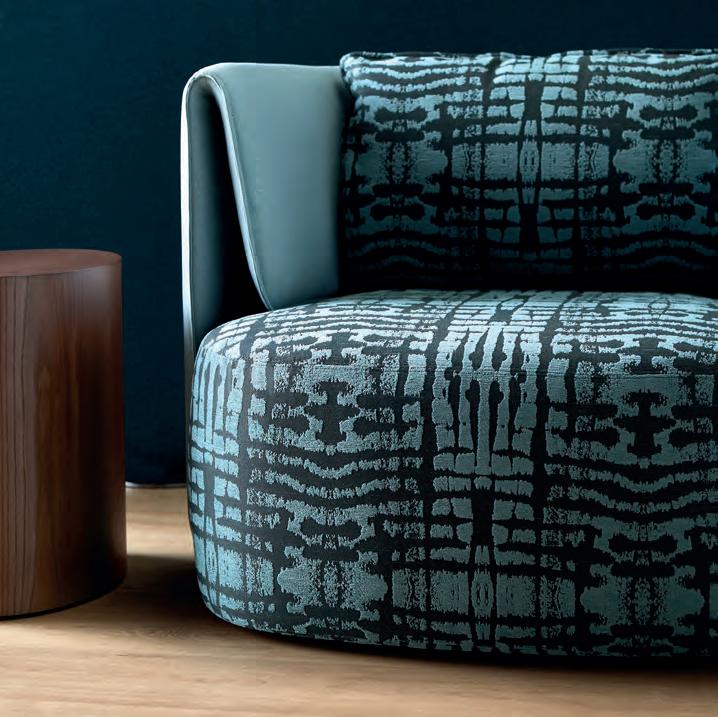

What’s new/next for you?
I still have projects in London, but in March, I relocated with my family to Saudi Arabia, so I’m looking forward to being part of the story that’s unfolding here. There’s so much going on here, there are so many opportunities and I’m trying to tap into as many as I can. There’s just such an excitement for newness here and people are really receptive to ideas. Someone said to me, “When you come here, say yes to everything, if someone invites you to something, say yes”, and it’s proving good for me. It’s a metaphor for life – say yes to everything. Well, almost everything. It’s just really refreshing to be experiencing life with such newness, and with my family as well, and just taking each day as it comes. amwadesigns.com

There are stories in everything… I underpin all my designs with stories


Education with Heart and Soul in Sussex’s glorious countryside 35 minutes by train from central London





‘This school has everything going for it’ The Good Schools Guide www.worthschool.org.uk

Matthew Doggett, assistant head of
Whether a student remains in the same institution for Sixth Form or chooses a fresh start elsewhere, the concepts of ‘Altruism’ and ‘Community’ for this age group (16-18 years) have never been more vital in terms of instilling core values that will last a lifetime.
The social, emotional and academic pressures facing Sixth Formers can lead them into the trap of focusing exclusively on their own needs, which is neither healthy for the individual nor helpful or pleasant for those around them.
The good news is that the start of Year 12 is an optimum time for students to adopt new routines, interests and ways of learning. The change in educational context can neatly disrupt negative habits; this allows opportunity for kind and outward-looking character traits to develop, in addition to the grit
and determination that is required for academic success.
At Worth School (for boys and girls aged 11-18 years), Community, along with Humility, Silence, Worship, Stewardship and Service, is one of our deeply embedded values. These form a firm foundation for the education we provide, not just providing young people with the skills they require for the ‘workaday world’, but helping to prepare them in mind and spirit for a secure, fulfilled, and happy life.
There are two powerful ways we inspire our Sixth Formers to ‘give back’ as well as to work hard. The first is our broad and successful Outreach programme, which includes partnering with local schools (sharing subject learning and facilities, and extending invitations to events), forming long-term relationships with national and international charities and committing to regular life-

affirming volunteer roles, such as with care charity, Befriended.
The second is the Leadership Formation programme; introducing this course to Year 12 has been revolutionary. Students benefit from a challenging year-long programme that includes attending workshops, listening to the experiences of guest and internal speakers, and producing reflection essays and personal portfolios on what they understand a considerate and thoughtful leader to be. The best-performing students are selected to become prefects, but even for those who are not, the process is attractive nonetheless; everyone is rewarded for their efforts with the appropriate grading and formal certification, and most importantly they will have developed values and a ‘moral compass’ to guide them beyond their life at school life. In the process of the programme,
they will have enjoyed the buzz of ambition while honing life skills in communication, resilience, humility and compassion, also vital skills for inspiring and leading younger students at the school.
For so many young people who focus intensely on their own goals it is a seismic shift to take responsibility for their role in other people’s lives. In our current – increasingly digital – world, it can be especially easy to overlook the needs of others and not truly grasp the skills required to lead happy, healthy, real-life relationships with those around us.
Community and altruism are integral to a young person’s development; put to work properly, alongside their academic and co-curricular pursuits, the transformative power is clear. Worth School was named ‘Boarding School of the Year’ at the Independent Schools of the Year awards, and won the ‘Best of the Best’ Senior category for ‘Great Alumni Mentoring’ in The Week Independent Schools Guide 2024. To find out more, see worthschool.org.uk























Learning languages broadens children’s horizons while also opening doors to work and study. Here’s how to help your child become a linguist
Words by Claire Atherton
The number of students studying foreign languages has nosedived in the state sector since 2004, when the government dropped the requirement to take a language at GCSE. But according to Oliver Hopwood, former chair of The Independent Schools’ Modern Languages Association (ISMLA), language learning remains “pretty buoyant” in many independent settings. “We’re fortunate in that parents often see the ability to communicate with different people as a good thing,” he says. “Depending on the size of the school, you’re also likely to find more languages on offer – Mandarin, some Russian, and some lesser-taught languages like Italian, Japanese and Arabic.”
Oliver can wax lyrical about the many benefits of studying languages because he’s experienced them firsthand. “As a teenager, I loved the access it gave me to the world beyond my immediate horizons,” he says. “Learning a language changes how you think about yourself and others and builds confidence in areas beyond your comfort zone. And the higher up in education you go, the more other subjects it touches upon, like history, politics and literature.”
Then there are the doors it opens at university and beyond. Between 2020 and 2022, Oxford University offered places to 45 per cent of applicants for its modern language courses, compared with under 6 per cent for computer science and under 9 per cent for economics and management. And research by the University of Portsmouth found that, across many sectors of employment, a second language isn’t desirable; it’s essential.
Research found that, across many sectors of employment, a second language isn’t desirable; it’s essential
So, how can parents cultivate a love of language learning in their child, and find a school that will help it to flower? Oliver has these tips.
EVERYDAY ENCOURAGEMENT:
• Foster curiosity about the languages being used around where you live
• When you’re abroad, encourage children to say the little things, like hello, please and thank you. It’ll normalise the experience and show them that people appreciate their efforts
• Role-model being a voracious consumer of language of all kinds. Expose your child to as broad a range of words, in as broad a context, as possible. And encourage curiosity about the ways we use language, including English, when we speak, write and read.
CHOOSING A SCHOOL:
• Don’t go with a shopping list of languages you think your child should learn. If they don’t like your choice, they aren’t going to learn it
• Don’t choose schools based on which languages they offer, or how many. Instead, look at how they teach them, and the experience pupils have. Are the teachers positive, or do they say, “Learn this or you won’t get a job?” How do they present the subject to its fullest value, both in and beyond the classroom? And do they make good use of the exciting technology available to support language learning? Do they tap into the rich supply of authentic language available on free and paid- for platforms, for example, or use technology for virtual language exchanges? ismla.co.uk
Jesse Elzinga, headmaster of Sevenoaks School, is justifiably proud of language provision at the school. Of its 1,200 pupils, 600 are studying French or Spanish, 200 Mandarin, 160 German and 100 Russian. “We’re unique in that our students study languages until they’re 18, as part of the International Baccalaureate (IB),” he says. “We have 76 different nationalities in the school, so our large modern languages department has trilingual and bilingual students, as well as beginner learners. Many of our staff are native speakers who offer regular conversation lessons and accompany children on our numerous trips, plus language clubs and debating clubs.”
To assess the quality of provision at a non-IB school, Jesse suggests looking at the numbers of students who choose to study a language at A level. “If they’re taught in an inspiring way, with great teachers and a strong department, they’ll want to keep going,” he says. Like Oliver, though, he advises against pushing or nagging a child. “As children get older, you have to persuade them of the value of doing something. So, explain why it’s important to study a language and what they’ll gain.” sevenoaksschool.org






With its classical frontage and elegant symmetry, this Grade II listed villa brings old-world romance to Greville Place, one of St. John’s Wood’s most exclusive streets.
First built around 1830, it’s been sensitively restored to offer over 6,100 sq ft of bright, free-flowing space, wrapped up with off-street parking, a double garage and a beautifully landscaped south-east-facing garden.
Inside, the raised ground floor sets a confident tone. A wide hallway sweeps you into a double reception room where high ceilings, original cornicing and tall sash windows steal the show, opening onto a balcony that gazes across the garden. There’s also a handsome study with its own balcony and a relaxed family room for quieter moments.
Head down to the lower ground and things shift into everyday mode. The generous kitchen, dining and breakfast area has a natural pull, spilling
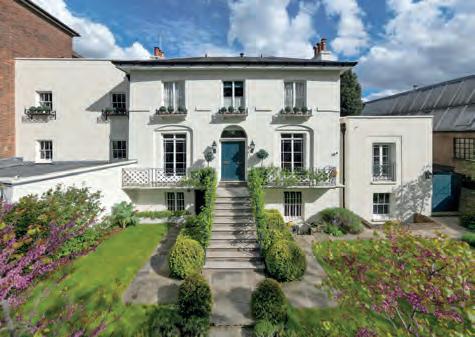
This
secluded Georgian gem offers layered history, leafy gardens and far-reaching views across the Capital



straight out into the garden when the weather plays ball. A gym with en suite shower, utility space and internal garage access keep life running smoothly, while a self-contained side wing offers two further en suite bedrooms and a private sitting room – ideal for visiting friends, staff or extended family.
Upstairs, the principal suite takes centre stage with its walk-in dressing room and spa-like bathroom, joined by two more en suite bedrooms. There’s even a sizeable loft above, ready to stash away the less glamorous bits of life, or convert down the line (subject to planning).
The garden is the real showstopper – calm, private and lush, with leafy borders and terraces that make it feel worlds away from the city beyond the gates. It’s rare to find this much space, character and ease wrapped into one home, especially this close to central London. £8.85 million, Savills (020 3043 3600; savills.com) and Knight Frank (020 7483 8343; knightfrank.com) PROPERTY
First built around 1830, it’s been sensitively restored to offer 6,100 sq ft of bright, free-flowing space




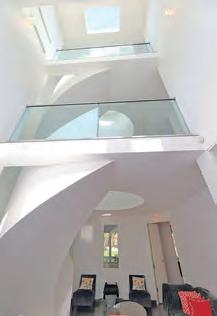


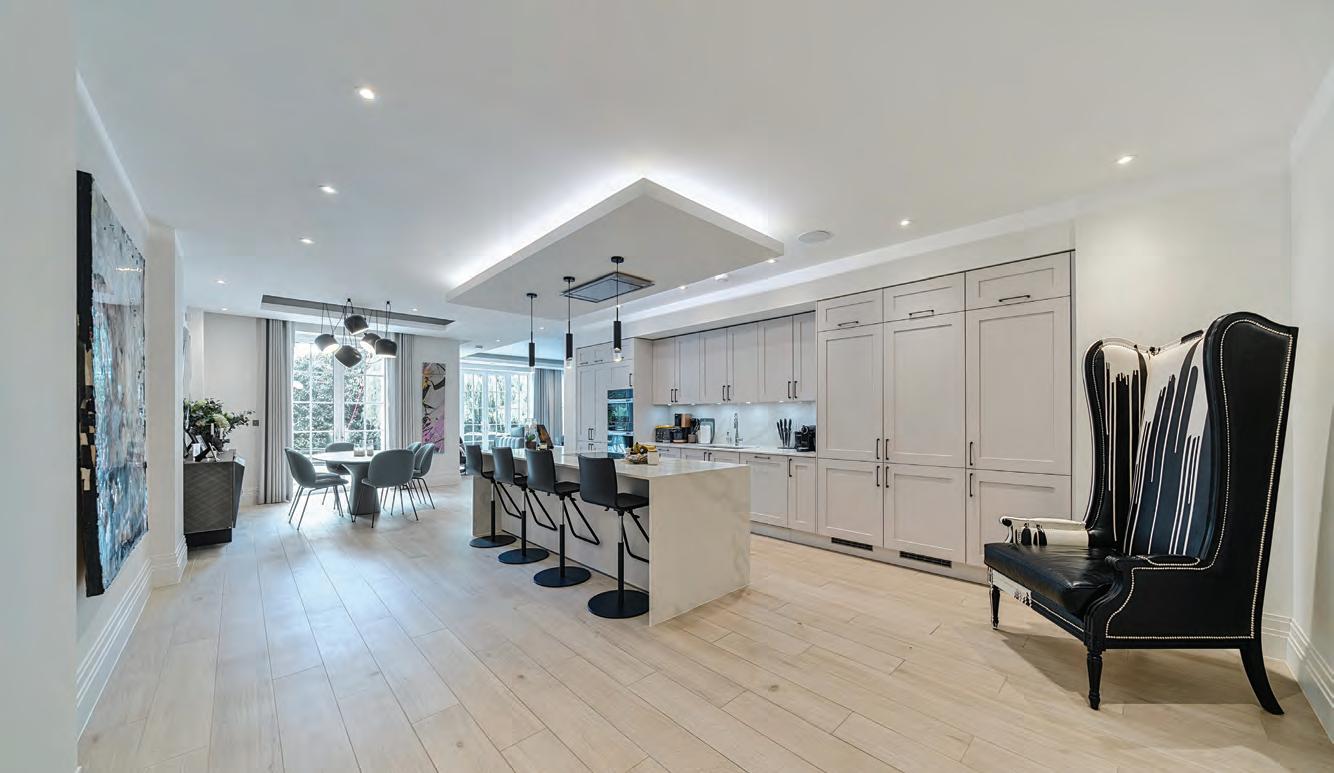



















ROAD, LONDON, N8


7435 3344

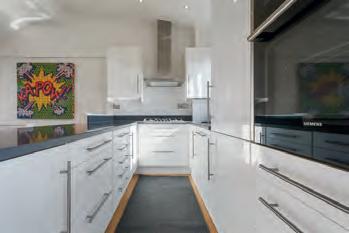


A beautifully refurbished and very stylish, two double sized, bedroom, two bathroom duplex apartment, occupying the top two floors of a delightful Victorian building, only moments from the shops and eateries of Fairfax Road. This lovely property also benefits from an ensuite dressing room (originally a third bedroom), a private south facing roof terrace, air conditioning in the reception room/kitchen and bright and airy accommodation.
The amenities of Finchley Road including the Underground station are located within approx. 0.4 mile with West End Lane and South Hampstead tube only approximately 0.75 mile away.
2 bedrooms | 2 bathrooms (1 en suite) | en suite dressing room (originally bedroom 3) | double reception room | open plan luxury kitchen, private south facing roof terrace | excellent location moments from Fairfax Road and approx. 0.35 mile of Finchley Road tube and shops.




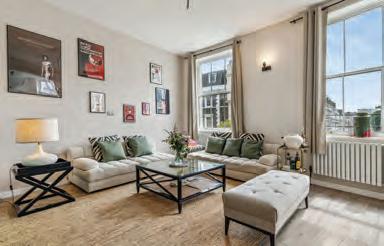
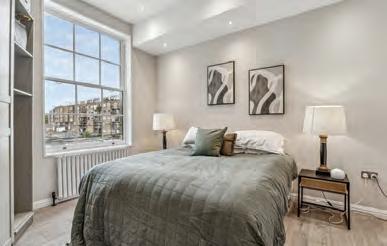
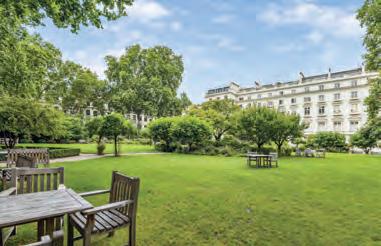
Set in a handsome Grade II stucco fronted Victorian former terrace house. Accessed through a projecting Doric porch, a stunning two-bedroom, second floor (with lift) apartment, with a generous ceiling height, plenty of natural light, Miele and Siemens appliances and access to the exclusive private square gardens.
This stylish and charming period apartment has been thoughtfully designed - with flexible living accommodation, creating a perfect blend for modern day living. Exclusively for the use of Cleveland Square residents, the gated Cleveland Square Gardens span approximately 1.5 acres and are bordered primarily by elegant, Grade II listed white stucco-fronted properties.
The property is exceptionally well connected for local, national, and international travel. Nearby transport links include Paddington Mainline Station (Network Rail, Heathrow Express, and the Bakerloo, Circle and District, Hammersmith & City, and Elizabeth Line), Bayswater Station (District and Circle Line) and Lancaster Gate Station (Central Line).
Lease Plus Share of Freehold: About 989 Years Unexpired | Service Charge: About £7,550 P.A.
Ground Rent: Peppercorn | Council Tax Band: G
HYDE PARK | 020 7467 5770
Email: crosling@winkworth.co.uk, paddington@winkworth.co.uk
www.winkworth.co.uk/paddington-bayswater







The apartment is approximately 1,132 sq ft (105 sq m) located on sixth floor served by a passenger lift. The accommodation includes entrance hall, an open plan kitchen reception room views overlooking the communal gardens, three bedrooms, an en-suite bathroom, and an additional shower room. The building benefits from a resident porter, a secure underground parking space, and a storeroom.
Located on the east side of Wimpole Street, close to the junction with Weymouth Street. This purpose-built building is located moments away from the shopping facilities of Marylebone High Street. Bond Street and Oxford Circus underground stations together with access to the A40/M40 are within close proximity. The open spaces of Regents Park are also nearby.
LEASEHOLD
£1,250,000
A three bedroom apartment, situated on the fourth floor located in the heart of the Marylebone Village. The apartment is approximately 1,533 sq ft (142.4 sq m) and comprises of three bedrooms, reception room, bathroom, cloakroom and office/storage room.
The building is located on the east side of Harley Street close to the junction with Marylebone Road and Devonshire Place. Transport links can be found from a number of nearby underground and train stations (Baker Street, Bond Street and Regents Park), as well as access to the Marylebone Road, A40 and M40. The open spaces of Regents Park are also nearby.
UNFURNISHED
£1,100 PER WEEK



Kent Terrace
Regent’s Park, NW1
Furnished
£5,500 per week
Sole Agent
67–71 Park Road
London NW1 6XU 020 7724 4724 astonchase.com

An excellent opportunity to rent a beautifully appointed Grade II Listed period home (351 sq m/3,786 sq ft) which is understood to be one of the largest residences in this highly regarded Nash terrace. The house features well planned and versatile accommodation that offers an abundance of entertaining spaces. Kent Terrace benefits from direct access to Regent’s Park via Hanover Terrace Mews and Kent Passage. It is also within walking distance of Baker Street Underground Station (Jubilee, Bakerloo and Hammersmith & City Lines), St John’s Wood High Street, and St John’s Wood Underground Station (Jubilee Line).

Accommodation and Amenities
6 Bedrooms, 5 Bathrooms, 3 Reception Rooms, Eat-In Kitchen, Cinema Room, Guest WC, Private Garden, Private Parking. Council Tax: Band H. EPC: B.







Est.1646
Contact Pickfords Gold:
0203 188 2544
gold@pickfords.com
www.pickfords.co.uk/gold
Pickfords Gold sets a higher standard for both domestic and international moving in and around the heart of London, offering a comprehensive range of services to ensure a seamless transition to your new home.
From meticulous packing of your belongings to specialised handling of antiques, fine art and high-value items, our expertise caters to the unique needs of discerning homeowners.
Our dedicated on-site move executive acts as your personal representative throughout the process, overseeing every detail to provide peace of mind.
Additionally, our white glove home makers service goes beyond the move itself, offering bed-making, kitchen setup and wardrobe organisation to make your new house feel like home.
Fully bespoke and tailored to suit owners of homes of distinction, Pickfords Gold ensures that every aspect of your move is handled with the utmost care and professionalism.
